 News Release "DNR keeps walleye limit at three for 2026 winter fishing on Mille Lacs Lake"
News Release "DNR keeps walleye limit at three for 2026 winter fishing on Mille Lacs Lake"
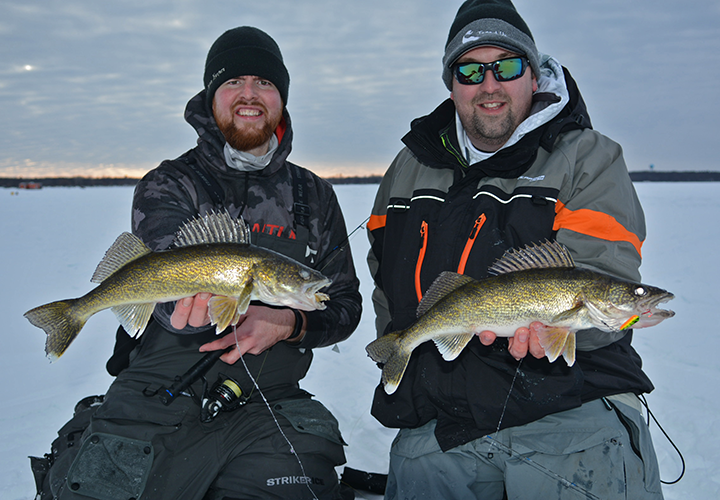 The walleye limit for ice fishing season on Mille Lacs Lake will remain at three fish longer than 17 inches, only one of which can be longer than 20 inches.
The walleye limit for ice fishing season on Mille Lacs Lake will remain at three fish longer than 17 inches, only one of which can be longer than 20 inches.
“Mille Lacs’ walleye population is trending in a good direction for both adult and juvenile fish,” said Brad Parsons, fisheries section manager for the Minnesota Department of Natural Resources. “We’re pleased to keep the current regulation in place for this winter and offer anglers this harvest opportunity.”
For yellow perch, the daily and possession limit will be 10. The change is a shift from last year, which began with a perch daily and possession limit of 20 that had to be reduced to 5 after the state in early March, exceeded its harvest allocation. The daily and possession limit of 10 is intended to provide state anglers the opportunity to harvest a meal of perch while also keeping the state within its harvest allocation.
Each year the state and the Ojibwe nations who retain harvest rights in the 1837 Treaty Area jointly set the harvest amounts for different fish species in Mille Lacs for the year. Fall netting data informs where harvest levels will be set when the state and Tribes meet in January. Once harvest levels for the year and the state’s winter harvest are known, the state may need to adjust regulations for the open water season that begins on May 9, 2026.
With northern pike increasing in abundance over the past two years to the highest numbers ever measured by the DNR, the possession limit will increase from three to five fish. This regulation retains a length limit of 30 inches that has been in place since 2020, which protects Mille Lacs Lake’s trophy-sized pike, while the possession limit increase is intended to encourage additional harvest.
Winter fishing regulations for walleye will be in effect from Monday, Dec. 1, through Sunday, Feb. 22, 2026. Yellow perch regulations will be in effect from Monday, Dec. 1, through Friday, May 8, 2026. Northern pike regulations will be in effect from Monday, Dec. 1, through Tuesday, March 31, 2026.
Winter regulations for Mille Lacs Lake are set after completion of the DNR’s annual fall netting assessments. The 2025 assessment found a slightly lower adult walleye abundance than in 2024, along with strong numbers of year-old walleye that have good potential to contribute to the fishery in the future.
Forage species such as young yellow perch and tullibee also are currently abundant, allowing medium to larger walleyes to fatten up over the summer and be in good condition heading into the winter."
Complete regulations and additional information about Mille Lacs Lake are available on the Minnesota DNR website. 200 720
 Wired2Fish November 21, 2025 "Which Fish Should You Eat? How to Choose Safe & Sustainable Table Fish"
Wired2Fish November 21, 2025 "Which Fish Should You Eat? How to Choose Safe & Sustainable Table Fish"
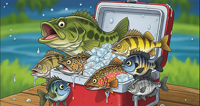 "Catch and release fishing is the cornerstone of modern fisheries’ management. It allows anglers to fish without removing individuals from the population, so that they can reproduce. With careful handling, the population of those fish can hopefully exist in much the same numbers and anglers can continue to catch their favorite species. With any luck, the population might even expand — and some of these fish will grow to large sizes.
"Catch and release fishing is the cornerstone of modern fisheries’ management. It allows anglers to fish without removing individuals from the population, so that they can reproduce. With careful handling, the population of those fish can hopefully exist in much the same numbers and anglers can continue to catch their favorite species. With any luck, the population might even expand — and some of these fish will grow to large sizes.
But that doesn’t mean that you can’t keep a few for dinner. When I was studying for my Wildlife Management degree at the State University of New York at Cobleskill, I was taught that conservation was “the wise use of resources.” While fish are not an infinite resource, it is possible to remove a few without causing the stocks to collapse. Of course, you should be careful about which species you eat, to protect the fish stocks and yourself.
How to Choose Fish For Dinner? When it comes to choosing fish for dinner, you should always ..." Read Full Story and Learn More >> How to Choose Safe & Sustainable Table Fish
 News Release November 2025 "DNR invites public input to update of Lake Winnibigoshish management plan November 2025"
News Release November 2025 "DNR invites public input to update of Lake Winnibigoshish management plan November 2025"
"The Minnesota Department of Natural Resources invites people interested in Lake Winnibigoshish to share their thoughts on prioritizing future management of the lake, as an initial step in updating the lake’s management plan.
The Lake Winnibigoshish management plan (including Cut Foot, Little Cut Foot and Sugar lakes) is set to be updated over the next two years. The updated master plan will consider current public values and attitudes about the lake and will be used to guide management of Lake Winnibigoshish fish populations and habitats. It will include management goals, objectives and strategies for the lake for the next 10 years. The U.S. Army Core of Engineers operates the lake’s master control system and maintains a separate master manual, which is not within the scope of the DNR’s planning efforts.
Public input opportunities
An online questionnaire is available on the Engage with DNR website through Friday, Dec. 12. The purpose of the online scoping questionnaire is to help generate ideas and identify potential planning issues and opportunities specific to Lake Winnibigoshish as the DNR begins the planning process.
Written comments may also be submitted by emailing grandrapids.fisheries@state.mn.us or mailing comments to 1201 East Highway 2 Grand Rapids, MN 55744. Additional public input opportunities will be available as the draft plan is developed.
About Lake Winnibigoshish
Winnibigoshish is Minnesota’s seventh largest lake, located 15 miles northwest of Deer River. It is a 56,544-acre lake with average depth of 15 feet and a maximum depth of 70 feet, comprising a shallow, wind-swept reservoir with a sandy shoreline and gently sloping shoal areas.
Nicknamed Big Winnie or Winnie, it sits in the heart of the 1.6-million-acre Chippewa National Forest. It’s a popular destination for anglers targeting walleye, yellow perch and northern pike. And the area offers other recreational opportunities like lakeside resorts and lodges, scenic north woods RV and rustic camping, boating, hiking, biking, touring and wildlife watching."
More information about Lake Winnibigoshish is available on the DNR website.
 News Release November 2025 "Hook-setting devices allowed starting with the 2025-26 ice fishing season. Hook configuration and length rule also clarified"
News Release November 2025 "Hook-setting devices allowed starting with the 2025-26 ice fishing season. Hook configuration and length rule also clarified"
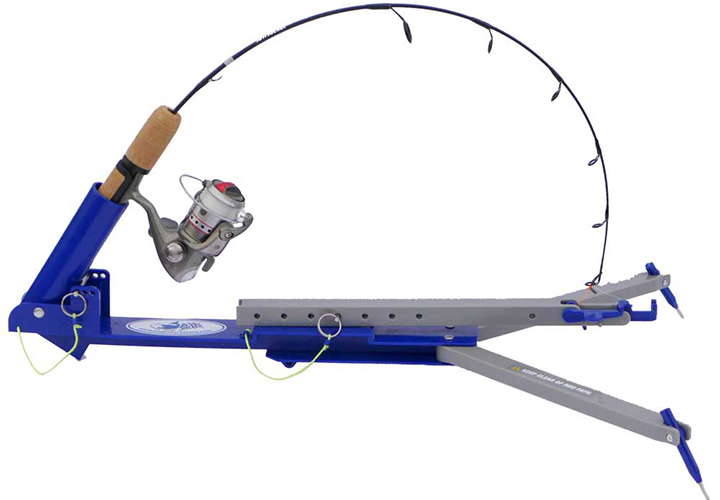 The Minnesota Department of Natural Resources has changed the rule surrounding ice anglers’ use of automatic hook-setting devices and has clarified rules about multiple hook configurations and length. These fishing rule changes will be in effect for the upcoming ice fishing season.
The Minnesota Department of Natural Resources has changed the rule surrounding ice anglers’ use of automatic hook-setting devices and has clarified rules about multiple hook configurations and length. These fishing rule changes will be in effect for the upcoming ice fishing season.
“We want to make sure anglers are aware of these recent rule changes as they enjoy the last days of open water and prepare for ice fishing season,” said John Dunn, DNR’s fisheries rules and regulations coordinator. “Robust public input helped guide our development of these rules, and we are excited to implement them beginning this winter season.”
Automatic hook-setting devices
Non-motorized devices that set the hook using the force of a spring device or the force of a bent fishing pole are now legal for use in Minnesota while ice fishing. The hook-setting component of any device must be non-motorized. Motorized jigging devices that are not designed to set the hook are considered legal. The device must not be capable of automatically reeling the fishing line or retrieving fish.
These devices are triggered automatically when a set bait is hit by a fish. They are typically used with a “tip-up” type angling device and may reduce the number of swallowed hooks, reducing hooking mortality.
All other fishing regulations still apply while using automatic hook setting devices and automatic jigging devices. Importantly, as is required with all tip-up use, the angler must be within 200 feet of the tip-up and not leave them unattended.
Multiple hook configuration and length
The new rule clarifies a single configuration for a line cannot have more than three hooks and the total distance between hooks cannot exceed 18 inches measured along the line. Previously, the length could not exceed 9 inches. The increase to an 18-inch maximum length is better suited for larger gamefish and is anticipated to reduce the number of swallowed hooks and hooks that are otherwise deeply set into the fish, thereby decreasing hooking mortality. This configuration is not specific to ice fishing and could be used either by ice or open water anglers.
Once rule changes are made, the DNR enacts them through regulations. Since these rule changes were made following the release of the current fishing regulations booklet, they will be listed in the 2026 Minnesota fishing regulations, which come out in March. Other fishing regulations are available on the DNR website and in print and wherever DNR licenses are sold.
 News Release October 2025 "Upper Red Lake Walleye Regulation Winter 2025-2026"
News Release October 2025 "Upper Red Lake Walleye Regulation Winter 2025-2026"
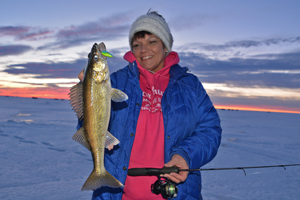 "The winter season walleye limit on Upper Red will be a four fish possession limit, with only one walleye longer than 17 inches allowed. This is a reduction from the 2025 open water season, which had a five fish possession limit.
"The winter season walleye limit on Upper Red will be a four fish possession limit, with only one walleye longer than 17 inches allowed. This is a reduction from the 2025 open water season, which had a five fish possession limit.
“Our fall assessment indicated that the walleye population continues to be in excellent shape. We are dropping the bag limit to four because the winter fishery is so popular,” said Brad Parsons, Minnesota Department of Natural Resources fisheries section manager. “The state waters of Upper Red Lake had an even higher number of spawning aged female walleye than last year. We’re also seeing strong numbers of young walleye that are just reaching harvestable size, which should make for exceptional fishing over the next few years.”
The fall gill net catch on state of Minnesota waters was 50.9 walleye per net, the highest since 2014. Netting results showed the lake is full of fish of all sizes, with half the catch between 13 and 16 inches. There were also good numbers of fish in the 17- to 20-inch range.
Walleye management on Red Lake is a collaborative effort between the Red Lake Nation and the Minnesota DNR, governed by a joint harvest plan agreed upon by the Red Lakes Fisheries Technical Committee. The Upper Red Lake Citizen Advisory Committee reviews walleye harvest totals, regulation options and provides recommendations for the state waters of Upper Red Lake."
Complete Upper Red Lake fishing regulations are available here, on the >> Upper Red Lake page on the DNR website.
 News Release October 13, 2025 "News release: Minnesota DNR seeks public input on walleye slot limits on Sand Lake"
News Release October 13, 2025 "News release: Minnesota DNR seeks public input on walleye slot limits on Sand Lake"
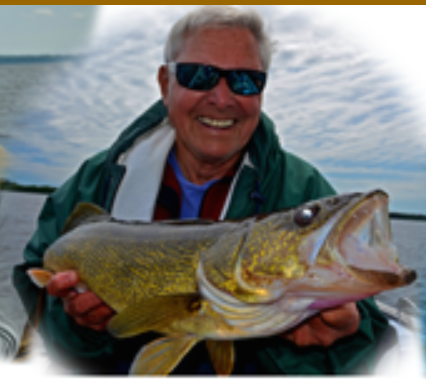 October 13, 2025: The Minnesota Department of Natural Resources is reviewing the current protected slot limit for walleye on Sand Lake, near Squaw Lake. This regulation may be extended, dropped or modified. Public input will be important to informing this decision.
October 13, 2025: The Minnesota Department of Natural Resources is reviewing the current protected slot limit for walleye on Sand Lake, near Squaw Lake. This regulation may be extended, dropped or modified. Public input will be important to informing this decision.
The DNR will be hosting a public meeting to discuss the slot limit and take public comments, from 6-8 p.m. Wednesday, Oct. 15, at the Squaw Lake Community Center, in Squaw Lake. Comments may also be submitted by sending an email to grandrapids.fisheries@state.mn.us, calling 218-328-8836 or mailing NE Regional Headquarters, Area Fisheries, 1201 East Highway 2, Grand Rapids, MN 55744.
Sand Lake has a long history of boom-and-bust angling cycles. The protected slot limit was implemented in 2016 with the goal of creating a more stable fish population and enhancing the angling experience. Since the protected slot limit’s implementation, surveys have been conducted in 2017, 2021 and 2023. Results show that the regulation is working as intended, with the walleye population stabilizing and including higher quantities of larger fish.
The current rules are: All walleye between 17 and 26 inches must be released. Anglers can keep one walleye over 26 inches.
The bag limit is the same as the statewide limit of six fish with one allowed over 26 inches. There will be no changes to the bag limit.
The protected slot limit is set to expire at the end of this fishing season. The DNR is seeking public input on whether to keep the current regulation, modify the limit to a 20- to 24-inch protected slot, or revert to the statewide walleye regulation.
 News Release "Mille Lacs Lake walleye limit increases from 2 to 3 on August 23, 2025"
News Release "Mille Lacs Lake walleye limit increases from 2 to 3 on August 23, 2025"
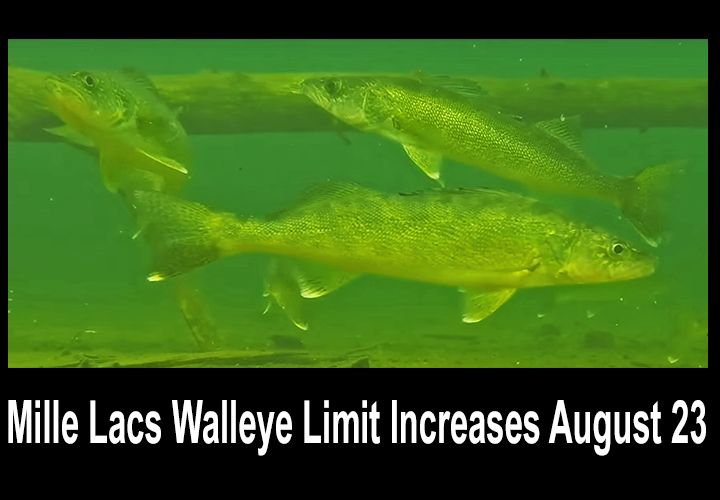 "The walleye limit on Mille Lacs Lake will increase from two to three beginning Saturday, Aug. 23, and continuing through Sunday, Nov. 30. The size limit — which allows anglers to harvest fish 17 inches or longer but only one longer than 20 inches — remains in place.
"The walleye limit on Mille Lacs Lake will increase from two to three beginning Saturday, Aug. 23, and continuing through Sunday, Nov. 30. The size limit — which allows anglers to harvest fish 17 inches or longer but only one longer than 20 inches — remains in place.
“Our primary management objective is to maintain a healthy walleye population and remain within the state’s share of sustainable harvest,” said Brad Parsons, Minnesota Department of Natural Resources fisheries section manager. “The slow bite this year allows the DNR to meet that primary goal and offer anglers the chance to take home an extra fish during the remainder of the season.”
As of July 31, state-licensed anglers have harvested 23.5% of the state’s allocation of 113,600 pounds of walleye. The state and the Ojibwe Tribes who retain harvest rights in the 1837 Treaty Area jointly establish a sustainable harvest level each year, and that total harvest amount is then allocated between state-licensed anglers and Tribal anglers.
The slow walleye bite on Mille Lacs Lake in 2025 is due to abundant forage in the lake from strong yellow perch and cisco hatches the previous year that provide an alternative to anglers’ baits. With slower fishing, fewer anglers have fished the lake than in a typical year.
“Although abundant forage has slowed angler catch rates, that’s a good, healthy sign for Mille Lacs Lake,” Parsons said. “Anglers are reporting they are catching plump walleye, and we expect the lake’s walleye population to grow well this season.”
Complete Mille Lacs Lake fishing regulations and regularly updated surveys that show ongoing state-licensed angler catches of walleye, northern pike and yellow perch are available on the Minnesota DNR website." 200
More Recent Fishing Reports
Follow on X • Follow on Facebook • Ely MN 8-20 • L.O.W 8-20 • Crappies 8-19 • Spinners 8-15 • Vermilion 08-14 • Wire Spinners 8-12 • Lake Winnie 8-8 • Sundin 8-7 • Northern Pike 7-31 • Bowstring 8-30 • Sundin 7-29 • Grand Rapids 7-28 • Big Sandy 7-27 • Lake Winnie 7-25 • Ely MN 7-23 • L.O.W. 7-23 • Bemidji 7-21 • Sundin 7-20 • Mille Lacs 7-18 • Sundin 7-17 • Grand Rapids 7-16 • Lake Winnie 7-14 • Sundin 7-11 • L.O.W. 7-9 • Sundin 7-06 • Lake Winnie 7-03 • Ely MN 7-02 • Walleye Limit 7-01 • Lake Winnie 6-20 • Radomski On Walleye Limits • Don't Land A Citation 5-1 • 200 • MN DNR Rule Changes 02-13 • MN Hall of Fame 01-24 • Charts 1-23-25 • MAPS 1-22-23 • Barotrauma Study 1-25-24 • Fish Consumption • Forward Sonar • Panfish Workgroup
 Walleye Bag Limit Reduction 2025: "Public input sought on reducing statewide walleye limit from six to four"
Walleye Bag Limit Reduction 2025: "Public input sought on reducing statewide walleye limit from six to four"
 "I do want to take a minute to remind you that the MN DNR Fisheries Chief, Brad Parsons, has presented the formal announcement to move ahead with the much-anticipated Walleye Limit Reduction plan. Slated to take effect for the May 2027 walleye fishing opener, the rule is set to reduce Minnesota’s Walleye Possession Limit of walleyes from 6 fish, down to 4 fish. Anglers will be allowed, if enacted, to have in their possession 4 legally obtained walleyes.
"I do want to take a minute to remind you that the MN DNR Fisheries Chief, Brad Parsons, has presented the formal announcement to move ahead with the much-anticipated Walleye Limit Reduction plan. Slated to take effect for the May 2027 walleye fishing opener, the rule is set to reduce Minnesota’s Walleye Possession Limit of walleyes from 6 fish, down to 4 fish. Anglers will be allowed, if enacted, to have in their possession 4 legally obtained walleyes.
Contrary to public perception, there is no provision now, nor will there be under this rule, any multiple of the so-called “daily bag limit”. The daily bag limit IS your possession limit. So, whether you have 4 walleyes in your freezer, at your cabin, or in a shoe box under your bed, you cannot legally harvest another walleye from ANY LAKE in Minnesota until you consume the ones you already have.
Thousands of anglers simply disregard possession limit rule every season. They repeatedly catch fish and take some of them home every time they go fishing and wind up over their possession limit. They believe that if they stay within the so-called “legal daily bag limit” that they’re good to go.” That’s great for local anglers, folks who can hide their fish at home, or at their cabin. But travelers, both resident and non-resident anglers alike have no choice but to carry their catch, in their “POSSESSION” when they travel home from the lake. For them, they are completely exposed and subject to being checked by the game warden at any time. That’s why the statewide 4 walleye possession limit rule is a big deal to me. It discriminates against tourism, and favors local anglers who can and do, keep more than their fair share of the total harvest.
In my opinion, the daily limit could be set at any random number, and I’d still be happy. You could limit me to 1 fish, and I’d be satisfied, so long as my possession limit remains at the present level, 6 walleyes in my possession. You’ve read before, or maybe not, all of the reasons why I believe the 4 fish daily limit won’t fix anything. Fisheries biologists have said repeatedly that the cuts would have to be much more dramatic to impact the overall statewide harvest. So, supporting the 4-walleye limit is unlikely to result in any benefit to you, or to the walleyes, or to the future of fishing.
Is the walleye reduction rule a done deal? No, it's success, or failure, will depend on how the public responds to the proposal. First, there is a public comment period in which citizens may present their opinions to MN DNR Fisheries staff. One way to participate is to answer these questions in a MN DNR provided survey called "Walleye and Sauger Limit for Inland Waters"
Another way to present your opinions is to share them here, with your fellow FishRapper readers. We’ll publish, with your permission, comments on both sides of the issue, even the ones thay we don’t agree with. So, make your best case, if you support the rule, tell us why and if not, let us know that too. Either way, your opinion matters, and I wholeheartedly encourage you to take advantage of this opportunity to influence the future of walleye fishing in Minnesota." ![]() — Jeff Sundin, The Early Bird Fishing Guide Office Cell Call or Text 218-245-9858 or Email on Facebook on X
— Jeff Sundin, The Early Bird Fishing Guide Office Cell Call or Text 218-245-9858 or Email on Facebook on X
 News Release April 2025 "MN DNR seeks public comment on Lake Superior fisheries rule proposals"
News Release April 2025 "MN DNR seeks public comment on Lake Superior fisheries rule proposals"
 "News release: The Minnesota Department of Natural Resources is taking public comment on a proposal that would adjust the trout season dates for Lake Superior anglers and allow more harvest of Atlantic salmon.
"News release: The Minnesota Department of Natural Resources is taking public comment on a proposal that would adjust the trout season dates for Lake Superior anglers and allow more harvest of Atlantic salmon.
The proposed rule revisions would change the start and end dates for the open season of trout fishing in stream tributaries above and below posted barriers. For brook trout, splake, rainbow trout, and brown trout above barriers and splake and brook trout below barriers, the change would move the opener date from the Saturday nearest April 15 to the second Saturday in April. The season close date would move from Labor Day to Sept. 30 annually. These proposed dates would provide more consistency in trout fishing regulations in streams across northern Minnesota.
The rulemaking proposal would also eliminate a current provision limiting anglers to one Atlantic salmon. The DNR no longer seeks to protect Atlantic salmon as the stocking program has discontinued. Under the revised rule, anglers would continue to be limited to five salmon, but the salmon could be of any species mix. Finally, proposed language clarifies inland rules apply for all other species not listed in the rule, except in the St. Louis River downstream of the Minnesota Highway 23 bridge, where Minnesota-Wisconsin boundary water rules apply.
Comments may be submitted through Thursday, May 8. If adopted, these rule changes would take effect March 1, 2026. Submit comments:
Via email to bethany.bethke@state.mn.us opens in a new browser tab. Please mention Lake Superior Rules in the email subject line.
Via mail to Bethany Bethke, Fisheries Rules and Regulations Coordinator, Fish and Wildlife Division, Minnesota DNR, 500 Lafayette Road, St. Paul, MN 55155.
More information, including the proposed rule language and contact information for comments, is available on the >> fisheries rulemaking page of the DNR website.
 Wired2Fish April 3, 2025 "Veteran Pros Sound Off: Are Anglers Forgetting How To Fish?"
Wired2Fish April 3, 2025 "Veteran Pros Sound Off: Are Anglers Forgetting How To Fish?"
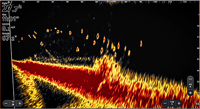 "Jimmy Houston has mixed feelings about forward-facing sonar. He doesn’t want to come off like a grumpy old-timer and say it should be banned. He uses LiveScope, which shows real-time movement of fish, at times and enjoys studying how the fish react to his baits. His point is, it can go too far. Many of the young guns who grow up fishing video-game style are missing out on some of the basics that will make them a better angler, Houston said.
"Jimmy Houston has mixed feelings about forward-facing sonar. He doesn’t want to come off like a grumpy old-timer and say it should be banned. He uses LiveScope, which shows real-time movement of fish, at times and enjoys studying how the fish react to his baits. His point is, it can go too far. Many of the young guns who grow up fishing video-game style are missing out on some of the basics that will make them a better angler, Houston said.
“Forward-facing sonar has taught a lot of younger people to stop ‘fishing.’ They’re hunting now,” said Houston, one of the sport’s all-time greats. “They’ve got their heads down, staring at that screen, and they won’t even make a cast until they spot a fish. That’s really changed the ..." Read Full Story and Learn More >> Veteran Pros Sound Off: Are Anglers Forgetting How To Fish?
 News Release April 1, 2025 "DNR sets open water fishing regulations for Upper Red Lake"
News Release April 1, 2025 "DNR sets open water fishing regulations for Upper Red Lake"
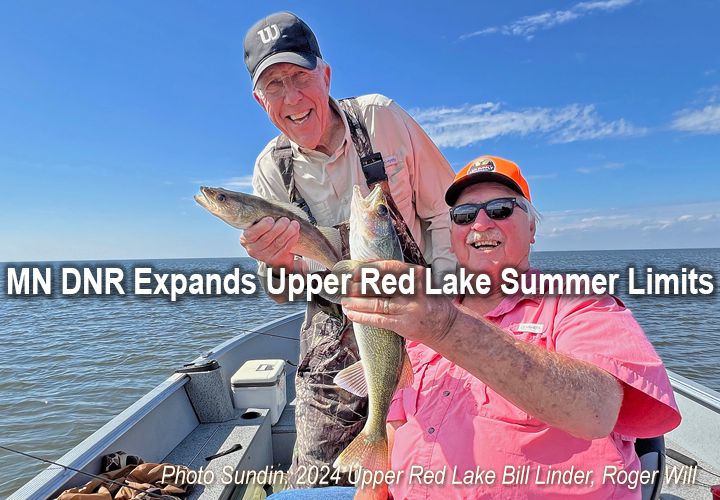 "Anglers fishing on Upper Red Lake during the 2025 open-water season that starts Saturday, May 10, will have a five-walleye possession limit, with only one walleye over 17 inches allowed.
"Anglers fishing on Upper Red Lake during the 2025 open-water season that starts Saturday, May 10, will have a five-walleye possession limit, with only one walleye over 17 inches allowed.
“Upper Red Lake female spawning walleye have been managed at a level that has resulted in a number of strong year classes recently,” said Edie Evarts, Minnesota Department of Natural Resources area fisheries supervisor for Bemidji. “The summer regulation is an opportunity for anglers to keep abundant young walleye while also maintaining the breeding fish at a level that continues to produce successful year classes.”
To continue producing the most successful year classes, enough female spawning walleye need to be present to produce lots of newly hatched walleye (known as fry). But if there are too many spawning walleye present, they produce too many fry. When fry are overabundant, the young fish don’t survive well because they are competing for a limited amount of food.
The regulation that begins May 10 aims to keep the lake’s stock of female spawning walleye in an ideal range by focusing angler harvest on the abundant immature fish under 17 inches, so future numbers of spawning walleye are not higher than desired. The regulation also aims to make sure overall harvest does not exceed agreed upon levels.
“We now have 20 years of data from managing the lake since the walleye fishery reopened in 2006 and a good idea of the impact of fishing regulations from our annual angler creel surveys,” Evarts said.
Walleye management on Red Lake is a collaborative effort between the Red Lake Nation and the Minnesota DNR, governed by a joint harvest plan revised by the Red Lakes Fisheries Technical Committee in 2015. Winter harvest regulations for 2025-2026 will be determined after the summer fishing season and completion of fall assessment netting.
The Upper Red Lake Citizen Advisory Committee reviews walleye harvest totals and regulation options and provides recommendations for the state waters of Upper Red Lake. Upper Red Lake fishing regulations are available on the Minnesota DNR website.
Anglers are reminded to protect Upper Red Lake and all Minnesota waters from aquatic invasive species by cleaning and draining watercraft and equipment and disposing of unwanted bait in the trash. A decontamination station is available at the Tamarac River Big Bog Public Water Access, referred to locally as Homestead Park."
 News Release March 14, 2025 "Minnesota DNR Summer Walleye Regulations on Mille Lacs Lake"
News Release March 14, 2025 "Minnesota DNR Summer Walleye Regulations on Mille Lacs Lake"
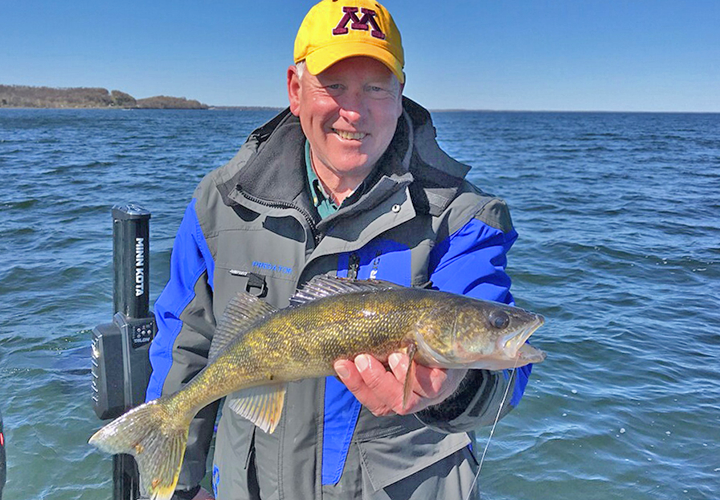 "Anglers on Mille Lacs Lake will have the opportunity to harvest two walleye daily during the upcoming open water season, which begins on Saturday, May 10, 2025 and continues through Sunday, Nov. 30, 2025. Harvested walleye must be 17 inches or greater, and only one of them can be over 20 inches.
"Anglers on Mille Lacs Lake will have the opportunity to harvest two walleye daily during the upcoming open water season, which begins on Saturday, May 10, 2025 and continues through Sunday, Nov. 30, 2025. Harvested walleye must be 17 inches or greater, and only one of them can be over 20 inches.
Following years of restrictive regulations, the Mille Lacs Lake walleye (ogaa in Ojibwe) fishery appears to be in a healthy state, a viewpoint shared by both state and Tribal fisheries biologists.
The Minnesota Department of Natural Resources and Ojibwe treaty Tribes drastically cut harvest more than a decade ago, concerned by a number of factors including changing ecological conditions and lower survival rates of young walleye. This approach has paid off.
“The walleye population in Mille Lacs is currently in a good place,” said Brad Parsons, Minnesota DNR fisheries section manager. “Ojibwe Tribes and the Minnesota DNR limited harvest, which allowed for an increased number of adult spawning walleye, and a strong 2024 year class that bodes well for the future health of the fishery.”
There also is an abundance of forage in the lake due to strong yellow perch and cisco 2024 year classes that are keeping walleye in a healthy condition. Higher availability of forage can reduce the risk of excessive angler catch rates.
State-licensed anglers share the harvest on Mille Lacs Lake with Ojibwe Tribes that have reserved rights to fish, wildlife and other natural resources under an 1837 Treaty. Ojibwe treaty Tribes — including Mille Lacs Band and Fond du Lac Band — established the Great Lakes Indian Fish & Wildlife Commission in 1984 to help oversee off-reservation resource protection, enhancement and harvest seasons in a three-state region.
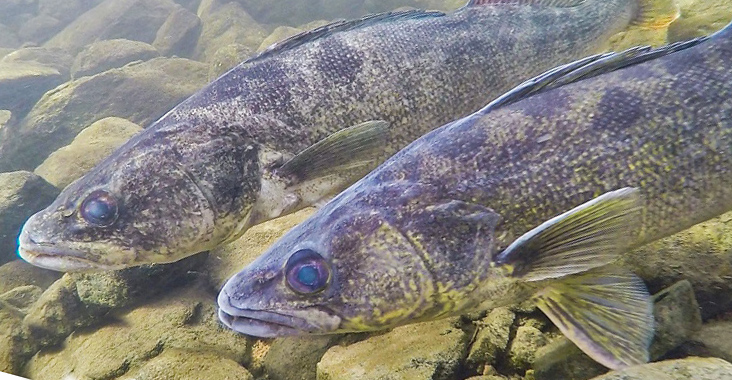 “Our commitment to ongoing research, science and using all available evidence to inform Mille Lacs Lake stewardship has benefitted everyone,” said Alexandra Bohman, GLIFWC director of biological services. “Interagency resource management works.”
“Our commitment to ongoing research, science and using all available evidence to inform Mille Lacs Lake stewardship has benefitted everyone,” said Alexandra Bohman, GLIFWC director of biological services. “Interagency resource management works.”
To conserve the fishery, an annual harvest level is set through discussion and agreement between the state of Minnesota and treaty Tribes. Each party manages its own share of the harvest. This year’s agreement considered various factors, including the lake’s increased adult walleye population, and resulted in a safe harvest limit of 113,600 pounds for state-licensed anglers and 88,000 pounds for Ojibwe treaty fishers.
“We are pleased that anglers will have an increased harvest opportunity this season,” Parsons said. “Mille Lacs Lake continues to surprise us, making it hard to assume conditions will be the same from year to year. We appreciate coming to an agreement with the Tribes that allows some additional flexibility for the state to manage its fishery through these changes. This includes the ability, in the event we exceed the state share of harvest, to allow catch and release walleye angling as long as the state share of harvest is not exceeded by 15%. Any amount above the state share of harvest would be deducted from state harvest next year.”
People who fish are reminded to protect Mille Lacs Lake and all Minnesota waters from aquatic invasive species by cleaning and draining watercraft and equipment and disposing of unwanted bait in the trash. A decontamination station is available 24 hours, seven days a week at the Shaw-Bosh-Kung Bay public access on the west side of Mille Lacs Lake about 8 miles south of Garrison on U.S. Highway 169.
Mille Lacs Lake continues to experience changes in part because of invasive species such as zebra mussels and spiny water fleas. State and Tribal biologists collaboratively study the lake’s complex food web and other developments such as the recent increase in large yellow perch (asaawe in Ojibwe). Additional information about aquatic invasive species and Minnesota’s prevention efforts is available on the Aquatic Invasive Spcies page on the Minnesota DNR website.
Also of note, on March 11, 2025 the daily and possession limit for yellow perch on Mille Lacs Lake was reduced from 20 to 5, a regulation that will be in place through Nov. 30, 2025. Complete Mille Lacs Lake fishing regulations and regularly updated surveys that show ongoing state-licensed angler catches of walleye, northern pike and yellow perch are available here on the >> Mille Lacs Lake Home Page of the MN DNR website.
 News Release March 2025 "Regulation Adjustment: Yellow Perch Limits on Mille Lacs Lake"
News Release March 2025 "Regulation Adjustment: Yellow Perch Limits on Mille Lacs Lake"
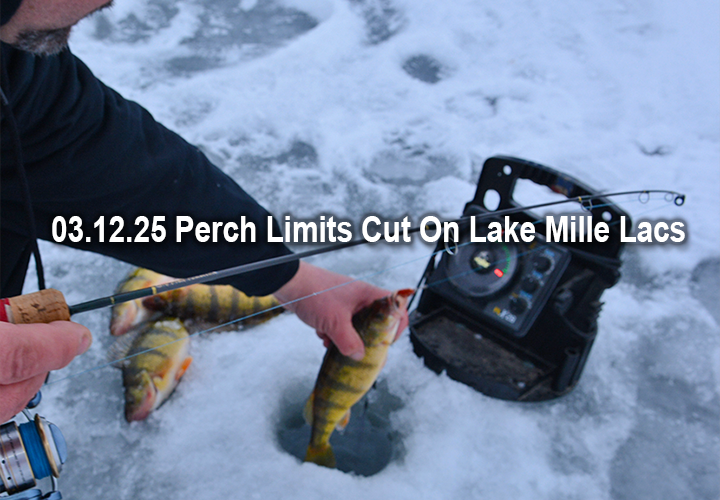 From now, through November 30, 2025 the daily and possession limit for yellow perch on Mille Lacs Lake will be reduced from 20 to five. The perch limit reduction became effective on March 11, 2025 and will remain in effect through the summer and fall, open water fishing season.
From now, through November 30, 2025 the daily and possession limit for yellow perch on Mille Lacs Lake will be reduced from 20 to five. The perch limit reduction became effective on March 11, 2025 and will remain in effect through the summer and fall, open water fishing season.
The Minnesota Department of Natural Resources is implementing this adjustment to the daily and possession limit to help maintain a good perch population for the future. Yellow perch are a key species in the Mille Lacs Lake ecosystem and young yellow perch are a primary food source for predators (especially walleye). Maintaining an abundance of older perch will result in more young being produced this spring and preserve harvest opportunities for next year.
“We are pleased that the perch fishing on Mille Lacs this winter has been good for many anglers,” said Brad Parsons, Minnesota Department of Natural Resources fisheries section manager. “With annual perch harvest never more than 7,000 pounds since 2012, this year’s rebound is a positive sign for the health of the lake.”
State-licensed anglers share the perch harvest on Mille Lacs with Ojibwe Tribes that retain fishing rights by treaty. To conserve the fishery, an annual safe harvest level is cooperatively established by the state and the Tribes through a government-to-government, co-management process. Each party then sets fishing regulations to stay within their share of the harvest. As of Feb. 23, the state has harvested more than 43,000 pounds of perch, exceeding its share of the harvest of 36,500 pounds.
“The state and our Tribal partners will intensify efforts to evaluate the Mille Lacs perch population and future sustainable harvest plans. The response we see in the perch population to this year’s higher harvest will be an important part of that,” Parsons said.
Complete Mille Lacs Lake fishing regulations and regularly updated data on state-licensed angler catches of walleye, northern pike and yellow perch are available on the Minnesota DNR website.
 News Release February 25, 2025 "Minnesota DNR adds angling limits for several species"
News Release February 25, 2025 "Minnesota DNR adds angling limits for several species"
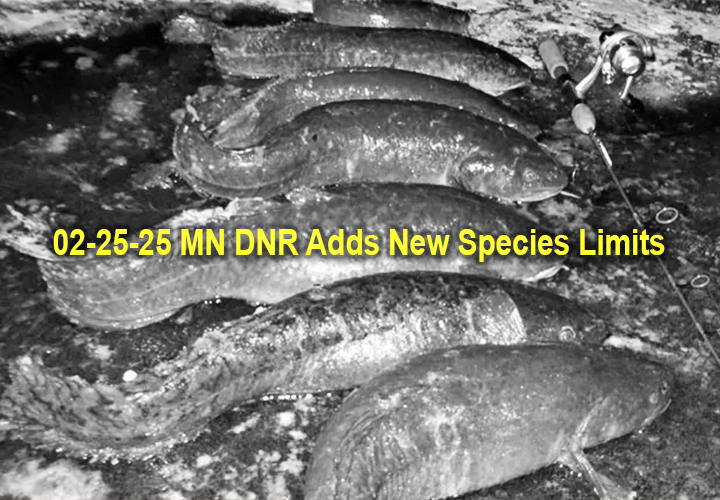 "Anglers will find these and other changes in the 2025 fishing regulations booklet.
"Anglers will find these and other changes in the 2025 fishing regulations booklet.
Minnesota will have newly established limits for several species when the new fishing license year begins on March 1, 2025.
The Minnesota Fishing Regulations for 2025 will include daily and possession limits for American eel, yellow bass, whitefish, cisco, and burbot. Those and other changes are available starting on page 13 of the regulations book.
“We remind anglers to check the regulations book for what’s new this year,” said Bethany Bethke, fisheries rules and regulations coordinator. “In addition to the newly established possession limits, there are numerous other regulations changing that apply to individual waters.”
The Minnesota DNR added limits on whitefish, cisco and burbot to protect their populations from over-exploitation. In past years these fish had been classified as rough fish and had no limits on how many could be kept. For American eel, which are rare in Minnesota, there is no harvest allowed, reflecting their rare status and need for protection. Finally, for yellow bass, the limit for this game fish is set at 30, which is a combined limit between yellow bass and white bass, because many anglers may not be able to tell the difference between them. In some instances where yellow bass are proliferating, special regulations with higher bag limits may be used.
Other new regulations
Other new regulations for 2025 include those for several species in the St. Croix River downstream of the Taylors Falls dam, and those regulations can be found starting on page 74 of the regulations. In Canada-Minnesota border waters, there are several portions of rivers now included in the border waters regulations, and those regulations can be found starting on pages 60-64 and page 67.
Additionally, there are new and modified regulations in effect for 14 other waters, located in Chippewa, Cook, Lake, Lac qui Parle, Olmsted, Otter Tail, Stearns and Todd counties.
Anglers are advised to check the regulations book for updated regulations available March 1 on the Minnesota DNR website. Printed copies will also be available by March 1 anywhere Minnesota fishing licenses are sold.
News Release November 22, 2024 "DNR rulemaking notice: Electronic Licensing System (ELS) rules update"
 "The Department of Natural Resources (DNR) is proposing technical changes to administrative rules that support a modernized electronic licensing system.
"The Department of Natural Resources (DNR) is proposing technical changes to administrative rules that support a modernized electronic licensing system.
The proposed rule changes are needed to align administrative rule with recent changes in Minnesota statute. Comments will be accepted through 4:30 p.m. Thursday, Dec. 26.
The new system will improve customer experience when purchasing a hunting or fishing license, renewing watercraft and recreational vehicle registrations or registering for a training course. It will launch in the spring of 2025. The changes will not significantly affect resource management.
Who will be affected by the changes? There are several groups who may be affected by the rule changes, including license agents, deputy registrars, and numerous groups of license buyers, including individual hunters and anglers, off-highway vehicle owners, boaters and charter boat captains in addition to ..." Learn More >> DNR rulemaking notice Electronic Licensing System For 2025
 News Release August 13, 2024 "Regulation change will increase walleye limit to 2 on Mille Lacs Lake"
News Release August 13, 2024 "Regulation change will increase walleye limit to 2 on Mille Lacs Lake"
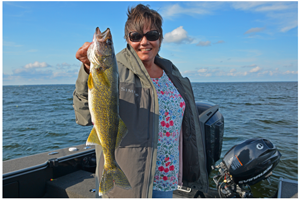 "Early season conditions allow for increased late season fishing opportunity
"Early season conditions allow for increased late season fishing opportunity
Effective Friday, Aug. 16, Mille Lacs walleye anglers can harvest up to two walleye through Saturday, Nov. 30. Both fish can be 18-20 inches in length or one can be 18-20 inches and the other must be longer than 28 inches.
“With high angler catch rates last fall, we opted for setting conservative fishing regulations this season because we expected high catch rates to continue,” said Brad Parsons, Minnesota Department of Natural Resources fisheries section manager. “Indeed, fishing was great for the first two months of the season. But with the catch and release regulation and windy and rainy weather, far fewer people than expected fished Mille Lacs so far this season, creating room for more harvest.”
As of July 15, state-licensed anglers had harvested about 26% of their allowed walleye take.
Based on meteorologists’ projections for a hot and dry summer, along with data on the fishery and past angler effort, the originally planned regulation starting Aug. 16 would have allowed anglers to keep one fish 21 to 23 inches or longer than 28 inches.
Population surveys suggest that Mille Lacs currently has relatively high numbers of walleye 18-20 inches in length. Expanding the possession limit to two fish and moving the size of harvestable fish to that size range allows anglers to catch and keep the “eaters” many prefer.
“We hope that anglers come out and take advantage of this opportunity to fish walleye on Mille Lacs,” Parsons said. “Anglers have advocated for relaxing walleye regulations to increase harvest opportunity when conditions allow, and this is one of those times.”
State-licensed anglers share the harvest on Mille Lacs with Ojibwe tribes that retain fishing rights by treaty. To conserve the fishery, an annual safe harvest level is set through discussion and agreement between the state and the tribes, with each party setting regulations to stay within their share of the harvest.
As of July 15, state-licensed anglers had harvested around 24,000 pounds of out of a potential harvest of 91,550 pounds. Tribal fishing harvest has been 53,671 pounds of the allowed 65,950 pounds.
Complete Mille Lacs Lake fishing regulations and regularly updated angler surveys that show ongoing state-licensed angler catches of walleye, northern pike and yellow perch are available here on the Minnesota DNR website >> Lake Mille Lacs Home Page
 News Release May 20, 2024 "Clear Lake Sibley County Open For Unlimited Fishing"
News Release May 20, 2024 "Clear Lake Sibley County Open For Unlimited Fishing"
"The Minnesota Department of Natural Resources has opened Clear Lake in Sibley County to unlimited fishing, allowing anglers to harvest fish that would likely not survive the upcoming winter during low water conditions on the 505-acre lake.
As part of a project to improve fish and wildlife habitat on Clear Lake, this spring the Minnesota DNR will begin to lower the lake’s water levels. The lake has been overwhelmed by large populations of common carp, causing turbid water and impeding aquatic plant growth. The lowered water levels mimic a drought, which can act as a natural “reset” to an ecosystem.
The drawdown will occur throughout the open water season of 2024. Plans call for lowering water levels by about 4 feet to create conditions for a winterkill and reduce common carp populations. The drawdown will also allow sediments to consolidate, which will allow new growth of submergent and emergent vegetation.
“Unlimited fishing presents an opportunity for anglers to harvest fish in Clear Lake as we proceed with the drawdown,” said Scott Mackenthun, Hutchinson area fisheries supervisor. “Clear Lake has suffered from impaired water quality for two decades.”
Unlimited fishing on Clear Lake will be in effect through Feb. 23, 2025. Anglers should check important rules for unlimited fishing that are available on the Minnesota DNR website (mndnr.gov/fishing/liberalized).
Once water quality is improved, the Minnesota DNR will stock walleye, northern pike, yellow perch and bluegill in Clear Lake.
Common carp can have a negative impact on water quality when they uproot native plants and disturb phosphorous-rich bottom sediments through their feeding habits. A Minnesota Pollution Control Agency watershed assessment (webapp.pca.state.mn.us/surface-water/impairment/72-0089-00) performed in 2017 found that Clear Lake had phosphorus levels more than three times the level that delineates an impaired water from non-impaired."
Anyone with questions about the Clear Lake project can contact Mackenthun at scott.mackenthun@state.mn.us or at 320-753-0324.
 News Release March 14, 2024 "Upper Red Lake Walleye Regulations 2024 Summer"
News Release March 14, 2024 "Upper Red Lake Walleye Regulations 2024 Summer"
"Anglers fishing on Upper Red Lake during the 2024 open-water season that starts May 11 will have a three-walleye possession limit, with only one walleye longer than 17 inches allowed. Beginning June 15, the limit will change to a four-walleye possession limit, with only one walleye longer than 17 inches allowed.
“This fishing regulation is a reflection of the lake’s popularity, especially when fishing is good,” said Edie Evarts, DNR area fisheries supervisor for Bemidji. “We’ve opted for a slightly more conservative bag limit for the early part of the summer to maintain the long-term health of the fishery and keep Upper Red Lake a premier angling destination.”
In response to a record-high harvest this winter and the need to stay within the state’s annual harvest quota, the DNR has opted for a lower daily limit during the early open water season, when catch rates and angler effort are highest. The decision to increase the possession limit by one fish starting June 15 will allow additional angling harvest opportunity while maintaining a healthy walleye population.
Walleye management on Red Lake is a collaborative effort between Red Lake Nation and the Minnesota DNR, governed by a joint harvest plan revised by the Red Lakes Fisheries Technical Committee in 2015. Winter harvest regulations for 2024-2025 will be determined after the summer fishing season and completion of fall assessment netting.
The Upper Red Lake Citizen Advisory Committee reviews walleye harvest totals and regulation options and provides recommendations for the state waters of Upper Red Lake. Upper Red Lake fishing regulations are available on the Minnesota DNR fishing regulations page."
 News Release March 14, 2024 "DNR sets open water Walleye Regulations for Mille Lacs"
News Release March 14, 2024 "DNR sets open water Walleye Regulations for Mille Lacs"
"Mille Lacs walleye fishing will be catch-and-release during the spring and early summer of 2024, with the potential to harvest a walleye 21-23 inches in length or greater than 28 inches starting on Friday, August 16.
“Despite poor ice conditions, anglers caught a lot of walleye this past fall and winter because those fish weren’t finding enough to eat,” said Brad Parsons, DNR Fisheries Section Manager. “We need to adjust the open water season regulations to account for the active bite and for the likelihood of higher water temperatures this summer. Even with catch-and-release regulations, many fish die when water temperatures get too warm.”
Good to excellent walleye fishing is expected to continue on Mille Lacs throughout the open water season, which begins on Saturday, May 11, and concludes on Saturday, Nov. 30. Catch rates should remain high with fish eager to bite.
While the DNR’s 2023 Mille Lacs assessment found slightly lower walleye numbers in 2022, overall the population remains healthy due to the continued abundance of walleye born in 2013 and 2017. Assessment results also indicate decent numbers of walleye born in 2021 and 2022 that should contribute to the walleye population in the future.
Those same population estimates, netting surveys and population models also indicate there are fewer yellow perch and tullibee, the primary food sources for Mille Lacs Lake walleye. With less natural forage, walleye searching for a meal are more likely to bite on anglers’ baits.
“It seems logical that high catch rates mean there are more walleye in the lake,” Parsons said. “The data we’ve collected and analyzed suggest the hot bite is because walleye aren’t finding as many tullibee and perch to eat. Our management decisions take those data into account.”
Mille Lacs continues to be a lake experiencing changes. Increasing water clarity and the introduction of invasive species such as zebra mussels and spiny water fleas mean there is less microscopic aquatic food, resulting in decreased production of forage species and fewer walleye maturing past their first year.
“Mille Lacs is a great place to fish and recreate, and anglers will continue to enjoy quality opportunities for walleye, smallmouth bass, northern pike and muskellunge,” said Parsons. “Our management approach is aligned with the Mille Lacs management plan and reflects our commitment to navigating the lake's unique dynamics and preserving its angling tradition.”
The DNR decided to allow catch-and-release only walleye angling from May through August 15. This decision aims to enable the harvest of one walleye measuring 21-23 inches in length or greater than 28 inches starting on Friday, August 16, assuming conditions permit.
State-licensed anglers share the harvest on Mille Lacs with Ojibwe tribes that retain fishing rights by treaty. To conserve the fishery, an annual safe harvest level is set through discussion and agreement between the state and the tribes, with each party setting regulations to stay within their share of the harvest. This year’s agreement took the lake’s overall walleye population decline into account and lowered the walleye safe harvest level by 10% from 2023, setting it at 91,500 lbs. for state-licensed anglers and 65,500 lbs. for tribal fishing."
 News Release February 8, 2024 "Public input needed on fisheries management plans for 112 Minnesota lakes"
News Release February 8, 2024 "Public input needed on fisheries management plans for 112 Minnesota lakes"
February is the month to connect with Minnesota Department of Natural Resources fisheries offices across Minnesota about 112 lakes in 34 counties that will have their fisheries lake management plans updated in 2024.
“People interested in the health and quality of Minnesota’s fisheries are a critical part of the DNR’s fisheries lake management planning process,” said Jon Hansen, DNR fisheries management consultant. “These plans establish fisheries management goals and objectives for each lake and define the work fisheries biologists do each year. Plans aren’t complete without observations and input from a lake’s stakeholders.”
The list of lakes is on the DNR website. Fisheries management plans for Minnesota’s 10 largest lakes follow a similar but separate update process. People who want to discuss management for a lake can call or email the area fisheries office listed for that lake during February. Those observations and comments, obtained during the initial step of the process, will be considered as area fisheries managers begin developing updates for each fisheries management plan. “We want to hear from anyone interested in these fisheries,” Hansen said. “Comments about experiences, observations, concerns and wishes for the fishery – rather than suggestions on how the DNR might accomplish a specific goal or objective – are the most helpful kinds of input.”
- Some questions to consider include:
- “What kind of fishing experience are you looking for?”
- “Are there fish habitat concerns you’d like to share?”
- “What kinds of fish do you like to catch?”
- “Do you like catching big fish or a lot of fish?”
- “Do you have social concerns about the fishery?”
The DNR’s interest in comments goes beyond individuals. Representatives of lake associations, outdoors groups, conservations organizations and local units of government are encouraged to comment during this initial period. Based on a lake’s needs, location or public interest, area fisheries managers might determine additional public engagement is necessary before a plan can be completed. Those opportunities will be promoted regionally and posted on the DNR lake management page.
For additional information about why and how the DNR develops and utilizes fisheries management plans for Minnesota’s 4,500 actively managed lakes, visit the DNR’s lake management planning page.
The lakes, listed by county, scheduled for lake management plan updates in 2024 include: Anoka: Crooked Lake • Becker: Bad Medicine, Little Cormorant, Waboose • Beltrami: Plantagenet, Bemidji, Big Bass • Blue Earth: Crystal (Lake Crystal), Loon (Lake Crystal), • Carlton: Forbay (Carlton) • Carver: Eagle • Cook: Little Bass (Remer), Pleasant, Gadwell, Vale, Stony, Crooked, Greenwood, Homer, Mcfarland, Mountain, Otter, Wampus, Cottonwood: Double • Crow Wing: Rock (Pine Center), Smith (Garrison), Douglas: Aaron (Millerville) • Hennepin: Medicine, Nokomis • Hubbard: East Crooked, Middle Crooked, West Crooked • Itasca: Blandin (Grand Rapids), Buck (Nashwauk), Burrows (Marcell), Cutfoot Sioux (Squaw Lake), Deer (Deer River), Little Cutfoot (Deer River), Little Moose (Grand Rapids), Moonshine (Grand Rapids), Moose (Deer River), No-te-she-bun (Remer), O'Brien (Nashwauk), Snowball (Calumet), Trestle (Talmoon), Wilson • Kandiyohi: Norway, Andrew, Games • Koochiching: Pine • Lake: Coffee, Organ, Basswood, Bald Eagle, Cedar (Winton), Fall, Good, Indiana, Lax, Little Knife, Newfound, Newton, Ojibway, Snowbank, Sucker • LeSueur: Gorman (Cordova), Roemhildts (Elysian), Volney (Le Center) • Lincoln: Hendricks, Perch • Meeker: Wolf (Dassel), Little Mud (Watkins), Little Swan (Dassel), Ripley (Litchfield), Round (Litchfield) • Murray: Fulda Lakes • Nobles: Bella • Otter Tail: Fish (Fergus Falls), Crystal (Pelican Rapids), Long (Fergus Falls) • Polk: Union • Pope: Pelican (Long Beach), Reno (Forada), Emily (Hancock) • Ramsey: Turtle • Rice: Cedar (Faribault) • St. Louis: Wild Rice Reservoir (Duluth), Boulder Reservoir (Duluth), Deepwater (Chisholm), Burntside, Ash, East & West Twin, Birch, Blueberry, Cedar (Aurora), Cedar Island, Crellin, Cummings, Elbow, Esquagama, Little Trout, Trout • Stearns: Two Rivers, Big Sauk, Little Birch • Todd: Beauty, Big Sauk, Little Birch • Waseca: Reeds (Elysian), St. Olaf (New Richland) • Washington: Lily • Wright: Deer
Learn how to provide your input and view the full list of the lakes with proposed changes, click here >> Help Update MN DNR Fisheries Lake Management Plans
 News Release August 9, 2023 "Minnesota DNR seeks input on proposed special fishing regulations"
News Release August 9, 2023 "Minnesota DNR seeks input on proposed special fishing regulations"
Each year, the Minnesota DNR proposes new special fishing regulations that apply to individual waters and asks the public for input about the proposals. The regulations, if enacted, are reviewed on a regular basis. The Minnesota DNR is proposing either new or changes to existing experimental and special fishing regulations for the 2024 fishing season that address a variety of topics.
The Minnesota Department of Natural Resources is asking for input on several special fishing regulation proposals for 2024 including Walleyes, sunfish and northern pike. Lakes include Winnie, Gull, Clearwater, Big Sand and more. For a full list of proposed regulation changes and information about how to provide your input, follow this link >> August 9, 2023 Minnesota DNR seeks input on proposed special fishing regulations for 2024
 News Release April 20, 2023 "Upper Red Lake Walleye Limit Increased For 2023"
News Release April 20, 2023 "Upper Red Lake Walleye Limit Increased For 2023"
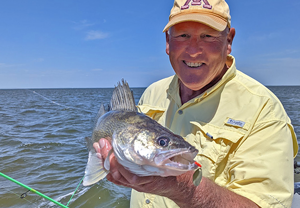 "Anglers fishing on Upper Red Lake in northern Minnesota during the 2023 open-water season that starts May 13 will have a five-walleye possession limit, with only one walleye longer than 17 inches allowed, according to the Minnesota Department of Natural Resources.
"Anglers fishing on Upper Red Lake in northern Minnesota during the 2023 open-water season that starts May 13 will have a five-walleye possession limit, with only one walleye longer than 17 inches allowed, according to the Minnesota Department of Natural Resources.
“This summer we are able to have a more generous bag limit as the 2019 class is super abundant. These fish are around 15 inches and are now becoming mature,” said Edie Evarts, Bemidji area fisheries supervisor. “We hope anglers will enjoy this extra opportunity, which will also meet our goal of managing spawning walleye stock at a level that produces future strong year classes.”
The 2022 open water season had a four-walleye possession limit, with only one walleye longer than 20 inches allowed.
“More spawning stock is not always better on Upper Red Lake. Our management has shown that too many spawners in the lake can result in smaller year classes,” Evarts said.
The Red Lake Nation and the Minnesota DNR manage walleye harvest on Red Lake under a joint harvest plan that the Red Lakes Fisheries Technical Committee revised in 2015. The 2023-2024 winter harvest regulations will be determined after the summer fishing season and the completion of fall assessment netting.
An Upper Red Lake Citizen Advisory Committee reviews walleye harvest totals and regulation options and provides recommendations for the state waters of Upper Red Lake. Upper Red Lake fishing regulations are available on the Minnesota DNR fishing regulations page opens in a new browser tab.
Anglers are reminded to protect Upper Red Lake from aquatic invasive species by cleaning and draining watercraft and equipment and disposing of unwanted bait in the trash. A permanent decontamination station is coming soon to the Tamarac River Big Bog Public Water Access, referred to locally as Homestead Park."
 Jeff Sundin "First Weekend For New Fishing Opportunities" February 23, 2023
Jeff Sundin "First Weekend For New Fishing Opportunities" February 23, 2023
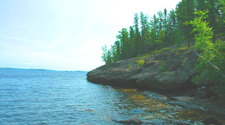 "The new issue of the MN DNR Fishing Regulations is out and for 2023-2024, stability is the theme. The entire "new regulations section" takes up about a half page and except for the new bag limit for Gar, there is nothing surprising, alarming, or controversial about the regulations.
"The new issue of the MN DNR Fishing Regulations is out and for 2023-2024, stability is the theme. The entire "new regulations section" takes up about a half page and except for the new bag limit for Gar, there is nothing surprising, alarming, or controversial about the regulations.
The arrival of the 2023-2024 regulations booklet offers a reminder to anglers that fishing licenses are due for renewal after this weekend, Sunday at midnight to be exact. That’s when the walleye and northern pike seasons will close on Minnesota’s inland waters.
If you’re reading this, then you probably fish and if you fish more than a couple days each season, you’ll probably need a full season license at some point anyway. Even though your old license is good through the weekend, my advice is to make life easier, get the new one now and be done with it. Use this link to Buy your Minnesota Fishing License right now. Or use this link to read the >> 2023-2034 Mn Fishing Regulations Booklet
 May 28, 2022 -"Legal Limits For Live Minnows In Minnesota?"
May 28, 2022 -"Legal Limits For Live Minnows In Minnesota?"
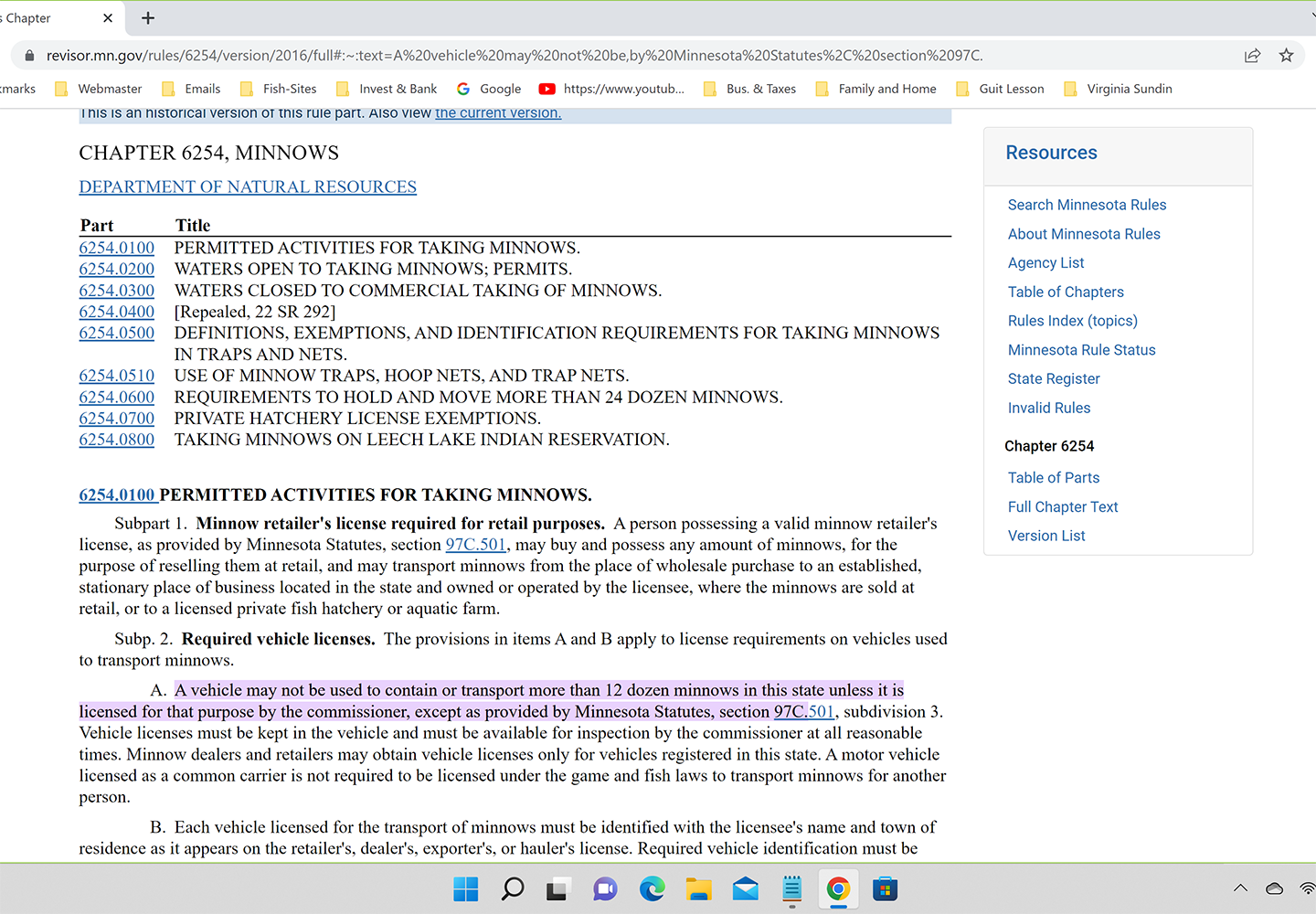 On Wednesday May 26, 2022 I wrote; "Just in time for the Memorial Day Holiday, bait trappers found their traps teaming with the silvery bait fish on Wednesday morning. Overnight, the situation changed from bait retailers rationing customer purchases, to offering anglers “all the minnows they want”, within the legal limits, of course."
On Wednesday May 26, 2022 I wrote; "Just in time for the Memorial Day Holiday, bait trappers found their traps teaming with the silvery bait fish on Wednesday morning. Overnight, the situation changed from bait retailers rationing customer purchases, to offering anglers “all the minnows they want”, within the legal limits, of course."
Q) Tyson Kuhn wrote; "What’s the “legal limit” on shiners? I’ve never heard that before."
A) Tyson, There are actually 2 answers to your question. Page 30 of Minneosta's 2022 Fishing Regulations Book says. "You can take an unlimited number of minnows and leeches with an angling license for personal use, however you may not transport more then 12 dozen minnows at one time without a commercial minnow license. All minnows and leeches must be transported in tap, well or bottled water."
So, to be more clear, you can, if you wish, buy more than 12 dozen minnows. But you'll have to break them down into smaller batches and transport them seperately to your fishing destination or home to your minnow tanks. 200
 News Release May 25, 2022 "Minnesota DNR reminds Mille Lacs anglers of June 1, 2022 catch-and-release walleye regulations"
News Release May 25, 2022 "Minnesota DNR reminds Mille Lacs anglers of June 1, 2022 catch-and-release walleye regulations"
"Mille Lacs Lake anglers can keep one walleye from 21 to 23 inches, or one over 28 inches, through Tuesday, May 31, 2022. Walleye fishin
A two-week closure, implemented to reduce hooking mortality, will then be in place from Friday, July 1, 2022 through Friday, July 15, 2022.
g will be catch-and-release from Wednesday, June 1, through Thursday, June 30.During the walleye closure, angling is allowed for all other species; however, live, dead, preserved or parts of minnows, night crawlers, worms, leeches or crayfish may not be used while fishing during this period.
Anglers targeting northern pike and muskellunge are allowed to use sucker minnows greater than 8 inches in length. All other anglers must use artificial lures. Catch-and-release walleye fishing will resume on Saturday, July 16, 2022 and continue through Wednesday, Aug. 31, 2022.
The one-fish walleye limit is scheduled to resume Thursday, Sept. 1, through Wednesday, Nov. 30.
Fishing hours on Mille Lacs Lake are 6 a.m. to 10 p.m. for all species. Beginning on the opening of muskellunge season on Saturday, June 4, 2022 anglers targeting muskie and northern pike are not subject to the night fishing closure, if they are using artificial lures or sucker minnows longer than 8 inches. During the late walleye harvest season beginning Thursday, Sept. 1, anglers can fish from 6 a.m. to midnight."
Complete Mille Lacs Lake fishing regulations are available at >> MN DNR Mille Lacs Lake
 News Release April 21, 2022 "DNR announces temporary, seasonal fishing closures"
News Release April 21, 2022 "DNR announces temporary, seasonal fishing closures"
"To protect spawning fish, the Minnesota Department of Natural Resources has begun to close certain portions of some Minnesota waters. The closings are routine and based on local conditions.
Closings occur each year as ice-out begins and waters begin to warm. The DNR closes the spawning locations to fishing only where habitat is limited and fish are very concentrated in one location, such as a river or the bay of a lake where fish are congregated during spawning.
Areas closed to fishing are listed and updated on the DNR website (mndnr.gov/Regulations/Fishing/Fishing-Seasonal-Closures.html). Portions of waters closed to fishing also are posted at access sites and in other visible areas. Anglers may fish in areas that are not posted."
 News Release April 21, 2022 "Upper Red Lake walleye regulations announced for open water season"
News Release April 21, 2022 "Upper Red Lake walleye regulations announced for open water season"
Anglers fishing during the 2022 open-water season that starts May 14 on Upper Red Lake in northern Minnesota will have a four-walleye possession limit, with only one walleye longer than 20 inches allowed, according to the Minnesota Department of Natural Resources.
Although angler activity was once again high last winter, harvest was modest at 134,000 pounds of walleye. Early winter fishing was very good, but heavy snow reduced anglers’ mobility and harvest in the later months.
Fall netting is used to assess the status of the walleye population and directly informs the pounds of walleye that can be sustainably harvested throughout the year — 2021 surveys found a robust population of walleye. The four-walleye possession limit, with one over 20-inch size restriction, is intended to keep total annual harvest within the target harvest range of 240,000 to 336,000 pounds. The 2021 open water regulation was a three-walleye limit with one over 17 inches allowed.
“We are happy that anglers will have the opportunity to harvest a few more and larger fish this summer,” said Edie Evarts, Bemidji area fisheries supervisor. “This is due to a combination of lower winter harvest and a desire to manage spawning stock at a level that stimulates recruitment of strong year classes.”
The Red Lake Nation and the Minnesota DNR manage walleye harvest on Red Lake under a joint harvest plan that the Red Lakes Fisheries Technical Committee revised in 2015.
The 2022-2023 winter harvest regulations will be determined after the summer fishing season and the completion of fall assessment netting.
An Upper Red Lake Citizen Advisory Committee reviews walleye harvest totals and regulation options and provides recommendations for the state waters of Upper Red Lake.
Conservation success story
Red Lake is a naturally productive walleye fishery but over harvest caused the walleye population to collapse in the 1990s.
In 1999, the DNR, the Red Lake Band of Chippewa and the Bureau of Indian Affairs agreed to a short-term stocking effort coupled with a harvest closure and aggressive enforcement. In 2006, the harvest fishery was reopened and has been managed successfully since that time. Upper Red Lake has become a top Minnesota fishing destination in summer and winter.
“We said it years ago and it’s worth repeating — Red Lake walleye fishing today represents a phenomenal conservation success story,” said Brad Parsons, Minnesota DNR’s Fisheries section chief. “We have many year classes of mature fish and consistent natural reproduction which enables us to manage this fishery for great fishing now and into the future.” Upper Red Lake fishing regulations are available on the Minnesota DNR fishing regulations page (mndnr.gov/Fishing/Upper-Red-Lake-Regulations.html).
 April 1, 2022 - "Minnesota Walleye Possession Limit Legislation Related Articles"
April 1, 2022 - "Minnesota Walleye Possession Limit Legislation Related Articles"
March 8, 2022 "Minnesota Already Imposes Most Restrictive Walleye Possession Limits, Why Make It Worse?"
March 4, 2022 "Leave Politics To Politicians, Fish To Biologists" Dennis Anderson, Star Tribune with DNR Fisheries Manager Gary Barnard
February 20, 2022 "Rationing Walleyes Because Of Wheelhouses - Necessary or Not?"
Februray 17, 2022 "Walleye Rationing An Ongoing Discussion"
Reader Comments Februray 16, 2022 "Walleye Rationing; An Ongoing Discussion"
Reader Comments and Editorials - "The Big List of Dirty Deeds!" February 15, 2022
Sundin Article "Socially Based Walleye Regulations — Good Idea, or Slippery Slope?" February 14, 2022
February 19, 2021 Walleye Bag Limits "Linking the Link-Able"
Reader Comments Shared With Permission February 19, 2021 MN Walleye Bag Limits S.F. 12 TR James
Jeff Sundin February 18, 2021 Walleye Bag Limits "Following The Follow-Able"
Jeff Sundin February 17, 2021 Walleye Bag Limit Reduction "A Lively Discussion"
Jeff Sundin February 11, 2021 "Noting the Note-Able About Walleye Bag Limit Reduction Bill S.F. 12"
Senate Bill SF 12 Minnesota Walleye Bag Limit Reduction Introduced January 7, 2021 — Jeff Sundin
 News Release March 30, 2022 "Mille Lacs Lake: One-fish walleye limit set for spring, fall fishing 2022/2023"
News Release March 30, 2022 "Mille Lacs Lake: One-fish walleye limit set for spring, fall fishing 2022/2023"
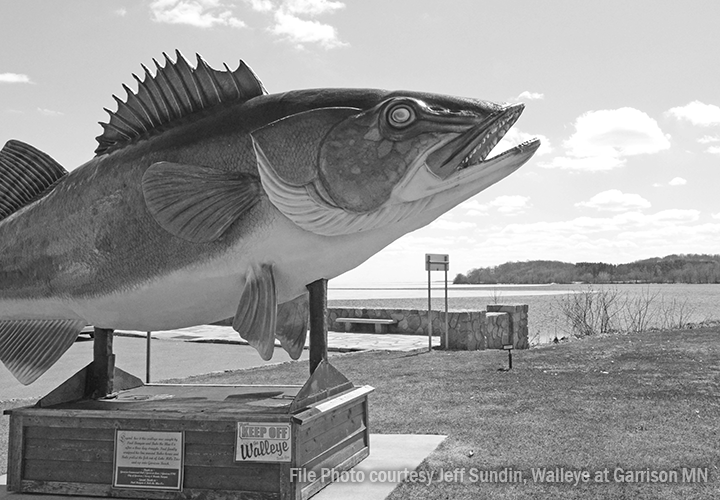 "Mille Lacs Lake walleye anglers will have two potential opportunities for harvest during the 2022 open water season.
"Mille Lacs Lake walleye anglers will have two potential opportunities for harvest during the 2022 open water season.
A one-fish limit will allow Mille Lacs anglers to harvest one walleye, 21 to 23 inches or one walleye longer than 28 inches from Saturday, May 14, 2022 through Monday, May 30, 2022.
(Catch and release fishing for walleye begins on May 31, 2022 and ends on June 30, 2022)
After a summer of catch-and-release fishing with an early July closure to reduce hooking mortality, the one-fish limit is expected to return on Thursday, Sept. 1.
“We must continue to manage state harvest very carefully on Mille Lacs so we can provide as much angling opportunity as prudent while protecting the opportunities for the future,” said Brad Parsons, fisheries section manager for the Minnesota Department of Natural Resources. “Two recent year classes show below average numbers of walleye, which means we need to factor in that fewer fish than normal will mature into spawning adults during the next few years.”
While the drops in fall walleye catch rates for the 2018 and 2019 year classes aren’t as dramatic as previous levels that closed walleye harvest on Mille Lacs, they do signal that more conservative walleye harvest regulations may be needed in coming years.
“Our goal for Mille Lacs fishing regulations now and in the future is to offer fishing opportunities while also maintaining the long-term sustainability of the lake’s fish populations,” Parsons said.
After opening weekend (when fishing is allowed 24 hours a day) fishing hours on Mille Lacs Lake will be 6 a.m. to 10 p.m. for all species. Beginning Saturday, June 4, muskellunge and northern pike anglers using artificial lures or sucker minnows longer than 8 inches can fish after 10 p.m.
Walleye fishing will be catch-and-release from Wednesday, June 1 through Thursday, June 30. A two-week closure – implemented to reduce hooking mortality — will be in place from Friday, July 1 through Friday, July 15. Catch-and-release walleye fishing will resume on Saturday, July 16 and continue through Wednesday, Aug. 31.
The one-fish walleye limit is scheduled to resume Thursday, Sept. 1 through Wednesday, Nov. 30. During this period, anglers may fish from 6 a.m. to midnight.
Season structure depends on many factors
“Our projections make me confident we’ll have fall harvest,” Parsons said. “But predicting fishing pressure, catch rates and weather involves some uncertainty, so we want people to recognize that the fall harvest will depend on how much of the state’s walleye harvest total remains as we approach September.”
The state and the eight Ojibwe bands that have treaty fishing rights have agreed that Mille Lacs Lake can sustain a total walleye harvest of up to 135,000 pounds in 2022, with state anglers harvesting up to 80,300 pounds and a maximum tribal harvest of 54,700 pounds.
The drop from last year’s levels of 87,800 pounds for state anglers and 62,200 pounds for tribal harvest was necessary to account for below-average catches of the 2018 and 2019 year classes in the fall walleye population survey
“Factors can change so we’ll reassess the walleye population come fall,” Parsons said. “Fish in those year classes in question are important for replacing the current mature walleye that are lost to both fishing and natural mortality.”
Mille Lacs Lake has been in a state of change since the 1990s, when the water clarity started to improve. Since then, there has also been warmer water temperatures and the introduction of invasive species such as zebra mussel and spiny water flea.
“The changing lake conditions impact fish populations and we will continue to monitor the lake to determine how these changes will influence fishing opportunities in the future,” Parsons said.
This year’s winter walleye harvest was about 6,800 pounds, less than half of what was expected. Lower catch rates for anglers and poor ice conditions in the early season were responsible. That drop in winter walleye take gave the DNR more flexibility to implement less restrictive open water regulations for 2022.
Even with the drop in winter harvest, a two-week closure during what’s normally one of the hottest times of the summer is needed to remain within the state’s harvest total. As water temperature increases, so does hooking mortality — the tendency for fish to die after being caught and released. Protecting walleye during this vulnerable period can allow for many weeks of harvest during cooler times of the year.
Additional details
The northern pike population on Mille Lacs Lake is healthy and harvest of fish under 30 inches is encouraged for anglers looking for another option to bring home a meal of fish.
To help avoid incidental catch of walleye during the two-week closure in July, fishing for any species with certain kinds of bait will be restricted. Anglers targeting northern pike and muskellunge can use sucker minnows longer than 8 inches. But anglers targeting other fish may not use live, dead, preserved or parts of minnows, night crawlers, worms, leeches or crayfish."
More information about fishing regulations on Mille Lacs Lake, ongoing DNR management and research, citizen engagement and Mille Lacs area recreation opportunities is available on the DNR website (mndnr.gov/MilleLacsLake).
 News Release March 2022 "New sunfish regulations in effect on 52 lakes"
News Release March 2022 "New sunfish regulations in effect on 52 lakes"
"Anglers will find this and other changes in the updated fishing regulations booklet.
Sunfish anglers need to closely check the 2022 Minnesota Fishing Regulations booklet and signs at water accesses for new sunfish limits in effect on 52 lakes and connected waters starting March 1.
The new regulations lower limits on specific waters as part of a Minnesota Department of Natural Resources initiative to protect and improve sunfish sizes. These changes are in response to angler-driven concerns over the declining sizes of sunfish in Minnesota.
“This is the final batch of new sunfish regulations that will be part of the Quality Sunfish Initiative. We’re pleased to be at our overall goal of 200 to 250 lakes with these special regulations,” said Dave Weitzel, Grand Rapids area fisheries supervisor. “We’ve had an impressive amount of public support all along for these regulations. Anglers spoke up that they want large sunfish in our lakes.”
The new regulations modify daily limits on the affected waterbodies. Anglers can keep only the prescribed number of fish per day but can return the next day for another limit if they don’t exceed the statewide inland water possession limit of 20 sunfish per angler. Beginning in 2022, nearly all lakes with special regulations for sunfish will use the same reduced daily limit approach where the statewide possession limit still applies. There are a few exceptions so anglers should read the regulations book carefully.
These regulations are designed with sunfish biology in mind. Sunfish spawn in large nesting colonies during the spring and early summer. Parental male sunfish build and defend nests. Females select a male, lay eggs, and leave the eggs for the male to protect. The largest sunfish often get the best spawning sites. These nest-building male sunfish play an important role in regulating the population’s size structure.
When anglers keep the largest sunfish, the remaining small males don’t need to compete with large males to spawn. With the large males gone, the small males devote less energy to growing, mature and spawn at smaller sizes, and fail to grow to the size preferred by anglers.
Minnesota fishing regulations use sunfish as the generic name for bluegill, pumpkinseed, green sunfish, orange-spotted sunfish, longear, warmouth and their hybrids. More about the Quality Sunfish Initiative is available on the DNR website.
Other New MN Fishing Regulations
Other fishing regulation changes in the 2022 regulations book include removal of an experimental 17-inch minimum length for walleye on Clear Lake in Washington County. The regulation was removed because management objectives were not achieved. The statewide regulation now applies and is expected to perform equally well.
Some of the lakes getting new sunfish limits will also see changes to crappie limits. Eight lakes will have the crappie limit reduced to five — five lakes in the Duluth area and one lake each in the Brainerd, Spicer and Walker areas. Finally, special sunfish regulations were reviewed on Ox Yoke and Sanborn lakes, both in Cass County, and the new regulation will be a five fish daily limit after the 10 fish limit failed to meet management objectives.
The 2022 Minnesota fishing regulations are available online and anywhere Minnesota fishing licenses are sold. The new sunfish regulations are found in the special regulations that begin on page 37 of the booklet."
 "The Big List of Dirty Deeds!" February 15, 2022
"The Big List of Dirty Deeds!" February 15, 2022
In my article yesterday (2-14-2022), I wrote, “I got the impression that for 2022, the debate (regarding reducing Minnesota’s walleye bag limit), the personalities and the positions are all essentially the same as they were in 2021. If anything has changed at all, it’s that folks on either side have hardened their positions even more since last year’s debate.”
Arriving by email, reader comments suggested that my assessment wasn’t far off, there are strong opinions on both sides of the issue and I'll share as many as I'm allowed. But because this one is particularly complex, I want to tackle it first and seperately.
 On 2-14-2022 Dan Wilm wrote,
On 2-14-2022 Dan Wilm wrote,
"Hey Jeff, Read your site today as well as Dennis Anderson's story in Sunday Strib. I have to totally disagree with what you and Dennis mention, which is that the choice to drop the walleye limit to 4 is not based on scientific evidence, rather a societal one.
"Societal decisions" are like everything else these days: overused and overhyped. As someone who is a mediocre fisherman at best, with a lifetime of experience on the water, as well as a keen observer, I can find no logic in yours or Dennis's assertions. Too many people double and triple limiting a lake when fishing is good, too many wheelhouses where fish are caught, consumed, and limits brought home, too easy to get information on a hot bite and show up at said spot, too much technology=a recipe for disaster. So, it's better to react after a disaster has occurred? That’s the definition of insanity.
We are surrounded by misuse of public lands by motorized land based recreation. Wakeboard boats overpopulate popular lakes in the summertime creating noise and shoreline damage from their huge wakes. Yet nothing, and I mean NOTHING has been done to somewhat rein in these out of control activities.
What you are suggesting is that we stay re-active rather than pro-active. But so often the problem with that assumption is that playing catch-up can be a long and difficult journey with outcomes the natural world can't accomplish.
Ontario has had a 4 fish limit as well as size restrictions for a long time. Proactive. Not reactive.
If you want to avoid "societal decisions" as mentioned, then support many more COs. I fully support the 4 walleye limit. It's got nothing to do with "imposing" our values and everything to do with societies insatiable thirst for destruction. THAT is the problem.” Regards, Dan
 A) First off, I’m not sure that defining me as “insane” is the best way to either gain my cooperation or influence my thinking. But since Dan does bring up some valid and oft-cited points, I have chosen to accept that, along with his comments and share them, with permissioin, in un-edited form.
A) First off, I’m not sure that defining me as “insane” is the best way to either gain my cooperation or influence my thinking. But since Dan does bring up some valid and oft-cited points, I have chosen to accept that, along with his comments and share them, with permissioin, in un-edited form.
How anybody can make the assertion that my position is not born out of a logical process is mysterious too. But maybe that might be my own fault, I think it’s because I’ve seen all the same arguments so many times that I didn’t take enough time yesterday to lay out the groundwork for my argument.
Over the years, anglers justify the need for reducing walleye bag limits by citing a list of social issues that they believe makes their arguments compelling. Dan’s message touched on most of those issues, so I broke his comments down logically, added a few more that he hadn’t mentioned and formed what I’ll call the big list of dirty deeds.
We are told by Dan, along with others, that the best way to resolve many of these "social issues" is to reduce the legal statewide walleye limit from 6 fish, down to 4 fish. Okay, so let's take an objective look at the list and use logic to find instances where dropping the limit will result in an improvement.
Dirty Deeds, The Big List
- Too many people double and triple limiting a lake when fishing is good.
- Too many wheelhouses where fish are caught, consumed, and limits brought home.
- Too easy to get information on a hot bite. Social media, cell phones, modern technology give anglers unfair advantage.
- Too much technology. Modern gear makes catching fish easier, threatens populations.
- Misuse of public lands by motorized land-based recreation.
- Wakeboard boats overpopulate popular lakes in the summertime creating noise and shoreline damage from their huge wakes.
- Not enough support for more DNR Conservation Officers.
- Reliance on scientific data is reactive, not proactive.
- Increased angling pressure that occurred during the recent pandemic.
- Guides harvest too many fish.
Sometimes the only way to answer a question is with a question. So, here goes; “How will forcing honest, law-abiding citizens into a reduction in walleye bag limits actually result in changing any of the behaviors outlined in the list of “dirty deeds”?
Over-limits, double-dipping and freezer stuffing are already against the law. So is the misuse of public lands, littering and violating noise, navigation and public safety regulations. Unless I’m missing something, dropping the walleye limit won’t change any of that.
What would help, in my opinion, is adding more conservation officers. That one is a great idea because many of the troubles that we face today result from what are already violations of game and fish regulations. So, adding more conservation officers is an idea I can support.
Simply seeing a CO in the field heightens anglers' observance of fish and game regulations, their presence alone serves to reduce over-harvest. So, to the extent that over-harvest is a significant problem on any given lake, this would be a much more efficient way to reduce it. Additionally, the positive side-effects of helping to cut down on other issues like littering, impolite boating behavior and other violations on the water would be icing on the cake.
I’m not a big fan of certain practices that my fellow anglers and boaters engage in either. The way I see it, there are some problems on this list that do need to be addressed. The problem is that I don't see how reducing walleye limits would fix them. So why not turn our attention toward things that might work better. Let’s work together to educate, encourage and be supportive of what is good, and for the good of our sport, discourage behaviors that reflect badly.
To borrow a quote from Superetramp's Crime of the Century album; "Don't arrange to have me sent to no asylum, I'm just as sane as anyone." Whether or not anybody follows my advice, I do try to offer legitimate, thoughtful, honest and yes, logical points of view about issues that relate to the betterment of fishing. I know that opinions vary, and I know too that even if I'm lucky, only a few people are swayed one way or another by any of my personal opinions.
I don’t presume to know you, or how to advise you specifically. But I do have my own simple way of parsing information and figuring out which side of any fence to land on. So, let me pose a hypothetical situation for those few of you who have not yet identified with one group or another.
Let's suppose that there are 2 groups of people courting you to become "a follower". Both groups present you with lots of information and some part of each argument makes sense. Because you like the idea of “doing something” about an issue, you’re contemplating joining one of them, but you’re facing a quandary. Which side is making the most sense, how do you decide which group to throw your support behind?
For me, whenever 1 group suggests that solving a problem requires giving up freedom, but the other side suggests that retaining freedom and resolving problems through education and personal responsibility is the answer, then I’ll choose education and personal responsibility every time. I don't think that's insane at all. ![]() — Jeff Sundin 218-245-9858 or EMAIL
— Jeff Sundin 218-245-9858 or EMAIL
Related Articles
MN Walleye Bag Limit Bill 01-07-2021 • Walleye Bill S.F 12 AFH Weighs In 02-11-2021 • Walleye Bag Limit Reduction "A Lively Discussion" 02-17-2021 • Walleye Bag Limits "Following The Follow-Able" 02-18-2021 • Walleye Bag Limits Linking the Link-Able 02-19-2021
 "Socially Based Walleye Regulations — Good Idea, or Slippery Slope?" February 14, 2022
"Socially Based Walleye Regulations — Good Idea, or Slippery Slope?" February 14, 2022
 Reducing Minnesota’s statewide walleye bag limit is back in the news for 2022, sort of.
Reducing Minnesota’s statewide walleye bag limit is back in the news for 2022, sort of.
Dennis Anderson’s, FEBRUARY 12, 2022, Star and Tribune column opens with this, “If Minnesota's six-walleye limit isn't hurting anything, why are some legislators and the DNR in favor again this legislative session of cutting the limit from six to four walleyes? Good question.”
Obviously, I’d like you to make your own judgement after you read Anerson's Star & Tribune 2-12-2022 article >> (Makes no scientific sense, but Minnesota DNR, Legislature mull cutting walleye limit from six to four) for yourself. But Anderson, in my opinion, does a good job of straddling the issue, giving both sides fair representation.
On the one hand, fisheries biologists mostly agree that that there is no “scientific reason” for reducing the statewide walleye limit and his article says so. On the other hand, some fishing experts, angling groups and even some DNR Fisheries folks find the idea of engineering the regulations based on “social concerns” appealing, the article says that too.
One sentiment that I was looking for, but couldn’t find though, was any sort of “New News”. After reading once, then re-reading it, I got the impression that for 2022, the debate, the personalities and the positions are all essentially the same as they were in 2021. If anything has changed at all, it’s that folks on either side have hardened their positions even more since last year’s debate.
Another quote from Anderson’s article says, “DNR fisheries chief Brad Parsons acknowledges the lack of scientific justification for a change, but says the proposal reflects a growing feeling among many anglers that four walleyes is a sufficient limit. Thus, rather than a science-based regulation adjustment, Parsons and other supporters of the change say the idea is socially based.”
If by now, the term “socially based” regulation doesn’t scare you, then it probably never will. But for me, the hair standing up on the back of my neck points toward the whole problem with socially based anything. When one group of people gets to decide what “they believe” is good for another group of people, it never ends well. It may seem like a fine idea when you’re on the winning side, but how many of us ever wind up always being on the winning side? Not many, I don't think, eventually the tables turn.
You’re an angler, what do you suppose would be the implications of a powerful and persuasive group of people deciding that fishing itself, in any form, is no longer “socially acceptable”? I know, you're thinking that's crazy talk, lunatic fringe stuff. But that’s just one point of view that I tried on for size in an internet search. I typed in the phrase "group seeks to ban fishing" and in .51 seconds, received almost 39 MILLION results; go ahead, try it yourself.
If you love fishing, hunting, trapping, shooting, whatever; your days are already numbered. As a group, the last thing we need is to be arguing among ourselves about which privileges are socially acceptable to lose.
If there are problems with fish limits, then let’s find out using scientific data and form plans based on that. In the meantime, I don’t think we should be so quick to judge what our fellow anglers do. We all have special circumstances that push us in one direction or another. Personally, I could live with a reduced limit, but I have easy access to good fishing, I don’t need to catch 6 fish. Some folks travel long distances though, and others only fish a time or two each season, I don’t think allowing them to go home with 6 fish is asking too much.
So, I’m choosing to follow the advice of my favorite nephew and I wouldn’t mind if everybody did. “Watch Your Own Bobber”. If you’re happy with a reduced possession limit, then nobody’s stopping you, go ahead and reduce yours, voluntarily. And if you love having a few walleyes to share with your friends and family, you won’t get any argument from me, I won’t be judging you. I think we should all enjoy them, while we still can.
Of course, that’s just my opinion, I could be wrong. ![]() — Jeff Sundin 218-245-9858 or EMAIL
— Jeff Sundin 218-245-9858 or EMAIL
 News Release February 8, 2022 "DNR seeks comments on Duluth area fisheries management plans"
News Release February 8, 2022 "DNR seeks comments on Duluth area fisheries management plans"
The Minnesota Department of Natural Resources invites anglers and others interested in fisheries management in the Duluth area to comment on fisheries management plans for several waterbodies through March 15, 2022.
The DNR uses fisheries management plans to identify specific management activities planned for designated lakes and streams over the next five to 20 years. The plans include background information such as water chemistry characteristics, water temperature information, species presence, stocking, regulations, and historic catch rates from previous fisheries surveys.
The plans also can identify biological and social factors that might limit a fishery’s potential and seek to address these limiting factors by prescribing science-based management tools when biologically, fiscally, and socially appropriate.
Comments and suggestions from the public are important for planning and evaluating the success of activities laid out in management plans.
Fisheries information and management activities are being updated for the following lakes and streams in Carlton County.
Carlton County waters:
- Hanging Horn Lake – updated plan focusing on management of naturally reproduced walleye and cisco and discontinuing unsuccessful trout stocking.
- Little Net River – initial management plan including proposal to introduce brook trout to specific reaches of the river.
- Red River – initial management plan including proposal to introduce brook trout.
Anyone can review the current plans for waters in the area as well as recent fish population assessment information at the DNR’s Duluth area fisheries office, 5351 N. Shore Drive in Duluth, by making an in-person appointment. People can call 218-302-3266 or email Deserae Hendrickson (deserae.hendrickson@state.mn.us) to make an appointment, request a copy of a plan or submit comments on a plan.
Comments and suggestions for managing other lakes and streams in the Duluth work area are welcome at any time and will be considered when those plans are due for review. Contact: Deserae Hendrickson, Duluth Area Fisheries manager, 218-302-3266.
The draft plan is also available on the DNR Duluth area fisheries page (mndnr.gov/areas/fisheries/duluth/index.html).
 News Release February 15, 2022 ""
News Release February 15, 2022 ""
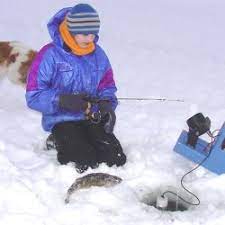 "Take a Kid Ice Fishing Weekend is this Saturday, Jan. 15, 2022 through Monday, Jan. 17, 2022
"Take a Kid Ice Fishing Weekend is this Saturday, Jan. 15, 2022 through Monday, Jan. 17, 2022
During the weekend, Minnesota residents can go ice fishing for free if they are fishing with a child 15 years old or younger. Minnesotans 15 years old or younger don’t need fishing licenses any time of the year.
“Ice fishing is lots of fun for kids and adults alike. There’s nothing quite like making your way onto a frozen lake, drilling a hole through the ice and catching fish,” said Benji Kohn, volunteer mentor program coordinator with the Minnesota Department of Natural Resources. “If you’re interested in giving ice fishing a try, learning the basics is really doable. We have helpful information on our website to get you started.”
Check the DNR’s learn to ice fish page (dnr.state.mn.us/gofishing/learn-ice-fish.html) for more information about ice fishing.
Additionally, anyone interested in learning about ice fishing for panfish is invited to a free DNR webinar on Wednesday, Jan. 12, 2022 at noon. Scott Mackenthun, a DNR area fisheries supervisor, will discuss tips and techniques anglers can use to have fun catching sunfish, crappie and perch. Registration is required. More information, including how to register, is available on the DNR outdoor skills and stewardship page (dnr.state.mn.us/fishwildlife/outreach).
Ice conditions vary and there is no such thing as 100 percent safe ice. Always check local ice conditions before heading out to a lake or river. Visit the DNR ice safety page (mndnr.gov/icesafety) for ice safety guidelines."
 News Release December 6, 2021 "NEW Minnesota Muskie Record Set On Lake Mille Lacs"
News Release December 6, 2021 "NEW Minnesota Muskie Record Set On Lake Mille Lacs"
 "An angler caught a muskellunge weighing 55 pounds, 14 ounces, from Mille Lacs Lake that the Minnesota Department of Natural Resources has certified as a weight-based state record. The previous record was a 54-pound muskie caught from Lake Winnibigoshish in 1957. Although news of the fish has spread quickly in the news and social media, a record is not official until the certification process is complete.
"An angler caught a muskellunge weighing 55 pounds, 14 ounces, from Mille Lacs Lake that the Minnesota Department of Natural Resources has certified as a weight-based state record. The previous record was a 54-pound muskie caught from Lake Winnibigoshish in 1957. Although news of the fish has spread quickly in the news and social media, a record is not official until the certification process is complete.
Nolan Sprengeler caught the muskie on Nov. 22, with friends Kevin Kray and Zack Skoglund. Their plan was to fish the afternoon until after moonrise, which was about 8 p.m. After some delay due to low water and frozen water at accesses, they eventually broke some ice to get Sprengeler’s boat in the water after sunset.
“On our last spot of the evening at about 9 p.m., I felt a tap on the end of my line. I fought the fish to the boat and Kevin Kray netted it for me. The fish measured 57.75 inches by 29 inches,” Sprengeler said. “After trying to revive the fish for about an hour we realized she wasn’t going to make it. We made the decision to bring the fish in to get weighed on a certified scale.”
Sprengeler brought the fish to be weighed on a certified scale with witnesses the next morning, had it identified at a DNR Fisheries office, and then dropped off his catch with a taxidermist.
The DNR announces new state records in news releases, on social media and on the DNR website. Find current records and guidelines for each type of state record at mndnr.gov/recordfish." 200
Helpful Minnesota DNR Website Hot Links
Current News Releases • Full Regulations Book • Fishing Seasons & Dates • MN DNR Fisheries Work Groups •
 News Release November 3, 2021 "Lake Mille Lacs, Upper Red Lake Winter Walleye Regulations Announced"
News Release November 3, 2021 "Lake Mille Lacs, Upper Red Lake Winter Walleye Regulations Announced"
"Ice anglers on Mille Lacs and Upper Red lakes can harvest walleye on both lakes this winter season.
A four-walleye bag limit, with only one walleye longer than 17 inches allowed, went into effect on Upper Red Lake on Monday, Nov. 1.
Effective Wednesday, Dec. 1, through Sunday, Feb. 27, 2022, winter anglers on Mille Lacs may keep one walleye between 21-23 inches or one fish longer than 28 inches.
The new regulation on Upper Red increases the possession limit from the three-fish limit that was in place during the 2020-2021 winter season and 2021 open water season, when mature walleye were lower in abundance. Results of this fall’s walleye population assessment showed a wide range of sizes with an abundance of mature spawning walleye, which allowed the more generous bag limit while also creating conditions that are favorable for the survival of upcoming walleye year classes.
This is the sixth consecutive year of winter walleye harvest on Mille Lacs, where winter regulations are set after completion of the annual fall netting assessment. Results from 2021 showed that the walleye population has declined from recent years but remains above population lows seen from 2012 to 2016.
Mille Lacs Lake winter regulations also reduce the possession limit for cisco (tullibee) from 10 to five and forbid the harvest of burbot (eelpout).
The Minnesota Department of Natural Resource’s website offers regulation Information on both lakes - Upper Red Lake and Mille Lacs Lake." 1103 200 300
 News Release April 15, 2021 "Stream trout fishing opens statewide on April 17, 2021"
News Release April 15, 2021 "Stream trout fishing opens statewide on April 17, 2021"
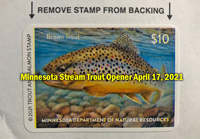 "Minnesota’s popular warm weather stream trout season opens Saturday, April 17, 2021 with quality fishing opportunities in every region of the state. Brook trout and splake fishing also open April 17, 2021 on Lake Superior and its tributary streams.
"Minnesota’s popular warm weather stream trout season opens Saturday, April 17, 2021 with quality fishing opportunities in every region of the state. Brook trout and splake fishing also open April 17, 2021 on Lake Superior and its tributary streams.
Minnesota has some excellent trout fishing, and anglers help pay for trout habitat and access improvements with their fishing licenses and trout stamps. Anglers fishing on designated trout waters must have a trout stamp validation in addition to an angling license.
Use new DNR StreamFinder tool to find places to fish. Whether you’re new to the sport or an experienced trout angler, the DNR has new information on Minnesota’s trout streams and lakes available on its website.
Modeled after the DNR’s popular LakeFinder tool, StreamFinder provides anglers with a description, species list, regulations and access information for trout streams throughout Minnesota. Anglers also will find helpful learning guides and fishing tips tailored to each of Minnesota's six trout fishing regions. More details: Go to the >> MN DNR Trout Fishing Page
 Wired2Fish April 14, 2021 "How to Install a Fish Finder | Pro Tips and Tricks for All Models"
Wired2Fish April 14, 2021 "How to Install a Fish Finder | Pro Tips and Tricks for All Models"
 "Installing a fish finder is a manageable DIY job as long as you have a little know-how and some essential tools. And even if you're not up for the job, knowing what a proper installation looks like allows you to assess and troubleshoot your setup. Professional boat rigger Andy Kratochvil of Fishlectronics walks us through a detailed step-by-step fish finder installation covering everything from the initial unboxing and parts layout, transducer placement and mounting, to wiring up the head unit.
"Installing a fish finder is a manageable DIY job as long as you have a little know-how and some essential tools. And even if you're not up for the job, knowing what a proper installation looks like allows you to assess and troubleshoot your setup. Professional boat rigger Andy Kratochvil of Fishlectronics walks us through a detailed step-by-step fish finder installation covering everything from the initial unboxing and parts layout, transducer placement and mounting, to wiring up the head unit.
Although the featured graph is a Humminbird SOLIX, Andy's tips and tricks are aimed squarely at making your install smooth and technically correct regardless of your fish finder's make, model, new or used. He starts by ..." View Video and Learn More >> How to Install a Fish Finder | Pro Tips and Tricks for All Models
 News Release March 24, 2021 "Early and late season walleye harvest to be allowed on Mille Lacs in 2021"
News Release March 24, 2021 "Early and late season walleye harvest to be allowed on Mille Lacs in 2021"
Early-season walleye anglers on Mille Lacs Lake will be able to keep one walleye 21-23 inches long or one longer than 28 inches. Summer will bring catch-and-release walleye fishing, with a mid-season closure, before the potential for a one-fish limit returns in the fall.
“Lower walleye harvest this winter is allowing us to offer some open-water walleye harvest this year,” said Brad Parsons, fisheries section manager for the Minnesota Department of Natural Resources. “We’re glad Mille Lacs anglers will have the chance to keep a walleye on opening weekend and Memorial Day weekend — two of the most popular times to fish during the year. We also hope to be able to allow some harvest this fall.”
The one-fish walleye limit will be in place from Saturday, May 15, through Monday, May 31. Walleye fishing will be catch-and-release from Tuesday, June 1, through Wednesday, June 30. A two-week closure — implemented to reduce hooking mortality — will be in place from Thursday, July 1, through Thursday, July 15. Catch-and-release walleye fishing will resume on Friday, July 16, and continue through Wednesday, Sept. 15.
After opening weekend, fishing hours on Mille Lacs Lake will be 6 a.m. to 10 p.m. for all species. Beginning Saturday, June 5, muskellunge and northern pike anglers using artificial lures or sucker minnows longer than 8 inches can fish after 10 p.m.
The one-fish walleye limit is scheduled to resume Thursday, Sept. 16, through Tuesday, Nov. 30. During the late season, the DNR also will allow anglers to fish from 6 a.m. to midnight.
“Our projections strongly suggest that fall harvest can occur,” Parsons said. “However, predicting fishing pressure, catch rates and weather involves some uncertainty so we want people to recognize that the fall harvest will depend on how much of the state’s 2021 walleye allocation remains as we approach September. As always, we will monitor the factors that determine the state’s walleye take throughout the open water season.”
The state and the eight Chippewa bands that have treaty fishing rights agreed Mille Lacs could sustain a state harvest of up to 87,800 pounds of walleye this year, unchanged from 2020. During the 2020 season, state-licensed anglers took 66,748 pounds and tribal fishing took 33,113 pounds.
This year’s winter walleye harvest was about 16,000 pounds, about half of what it was in 2020. Lower catch rates for anglers, combined with fewer people fishing, caused harvest to return to normal levels after a big spike last year. That drop in walleye take gave the DNR more flexibility to implement a one-fish limit during the early season and plan one for the late season.
Even with the drop in winter harvest, a two-week closure during what’s normally one of the hottest times of the summer remains necessary to protect walleye. As water temperature increases, so does hooking mortality — the tendency for fish to die after being caught and released. Protecting walleye during this vulnerable period can allow for many weeks of harvest during cooler times of the year.
To help avoid incidental catch of walleye during the two-week closure, fishing for any species with certain kinds of bait will be restricted. Anglers targeting northern pike and muskellunge can use sucker minnows longer than 8 inches. But anglers targeting other fish may not use live, dead, preserved or parts of minnows, night crawlers, worms, leeches or crayfish.
“Our goal with these regulations is to meet the state’s treaty obligations while also providing the best possible experience for anglers, recognizing that fishing and the anglers it brings are economically important to the Mille Lacs Lake area,” Parsons said.
More information about fishing regulations on Mille Lacs Lake, ongoing DNR management and research, citizen engagement, and Mille Lacs-area recreation opportunities is available on the DNR website.
 News Release March 3, 2021 New sunfish regulations in effect on nearly 100 waters
News Release March 3, 2021 New sunfish regulations in effect on nearly 100 waters
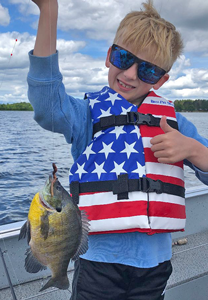 Sunfish anglers will need to closely check the 2021 Minnesota Fishing Regulations booklet and signs at water accesses for new sunfish limits that are now in effect on 94 waters.
Sunfish anglers will need to closely check the 2021 Minnesota Fishing Regulations booklet and signs at water accesses for new sunfish limits that are now in effect on 94 waters.
The new regulations lower limits on specific waters as part of a Minnesota Department of Natural Resources initiative to protect and improve sunfish sizes. These changes are in response to angler-driven concerns over the declining sizes of sunfish in Minnesota.
“Robust public input and support helped us move forward with the Quality Sunfish Initiative. We had more than 3,700 comments and over 85% of them were in favor of trying to improve sunfish sizes,” said Dave Weitzel, Grand Rapids area fisheries supervisor. “It’s clear Minnesota anglers treasure sunfish and want to make sure we have lots of large sunfish in our lakes.”
The new regulations only modify daily limits on the affected waterbodies. Anglers can only keep the prescribed number of fish per day from the water but can return the next day for another limit as long as they don’t exceed the statewide inland water possession limit of 20 sunfish per angler.
The new sunfish regulations only include inland waters of Minnesota. Specifically, 44 waters will have a new daily limit of five sunfish, 31 will have a limit of 10 sunfish, 17 will have a limit of five sunfish and five crappie, and two will have a limit of 10 sunfish and five crappies.
In addition to the new waters, there are 57 waters that previously had reduced limits for sunfish and these regulations remain in effect.
“We’ve evaluated previous special sunfish regulations and found that reducing harvest can indeed produce large sunfish,” Weitzel said. “Sunfish grow slowly—about an inch per year—so a large sunfish can be more than a decade old. It’s critical to protect these large fish from excessive harvest because they aren’t easily replaced.”
Sunfish spawn in large nesting colonies during the spring and early summer. Parental male sunfish build and defend nests. Females will select a male, lay eggs, and leave the eggs for the male to protect and fan with his fins. These nest-building male sunfish play an important role in repopulation, with the largest sunfish often getting the best spawning sites.
When anglers keep the largest sunfish, the remaining small males don’t need to compete with larger males to spawn. Once the larger males are gone, the smaller males devote less energy to growing. Instead, they devote energy to spawning at younger ages and smaller sizes.
Minnesota fishing regulations use sunfish as the generic name for bluegill, pumpkinseed, green sunfish, orange-spotted sunfish, longear, warmouth and their hybrids. More about sunfish biology and the Quality Sunfish Initiative is available on the DNR website.
Other new regulations
Other fishing regulation changes in the 2021 regulations book include new experimental regulations on Island Lake Reservoir near Duluth. On this lake, which has abundant but very small walleye, fisheries managers aim to increase the size of walleye by increasing the possession limit and applying a protective slot limit.
New experimental lake trout regulations also are being implemented in Yawkey, Sagamore, Pennington and Mahnomen lakes. These mine pit lakes in Cuyuna Country State Recreation Area have the potential to support naturally reproducing lake trout populations. Anglers there will be limited to harvesting one lake trout, which must be more than 20 inches, from each water.
Experimental regulations mean that the regulation is temporary. Fisheries managers must then evaluate the regulation to determine whether it had the intended effect, usually after 10 years.
The 2021 Minnesota fishing regulations are available online and anywhere Minnesota fishing licenses are sold. The new sunfish regulations are found in the special regulations that begin on page 38 of the booklet.
 March 2020 Minnesota Fishing Regulations Include Notable Changes For Mississippi River Border Waters
March 2020 Minnesota Fishing Regulations Include Notable Changes For Mississippi River Border Waters
Anglers will find a variety of changes in the 2020 Minnesota fishing regulations booklet, including new possession and length limits on the Minnesota-Wisconsin border waters of the Mississippi River. This is the first comprehensive update of regulations on the Mississippi River border waters in nearly 70 years.
The new border waters possession and length limits for most gamefish species went into effect March 1, and were developed based on decades of biological data, as well as substantial public input during 2018 and 2019.
“We've heard positive feedback about the changes from anglers who care a great deal about sustaining the high quality fish populations and the fishing opportunities on these Mississippi River border waters,” said Kevin Stauffer, the Department of Natural Resources area fisheries supervisor in Lake City.
The new regulations for the Mississippi River border waters and Lake Pepin include lower possession limits, and changes to some length limits, for walleye and sauger, northern pike, channel and flathead catfish, shovelnose sturgeon, crappie, sunfish, yellow perch, and white and yellow bass.
The changes are proactive measures that will help both states manage the effects that changing river conditions, invasive species and increased angling effectiveness have on fish. Wisconsin has approved identical regulations that will go into effect April 1. Some examples include:
- Walleye and sauger limit has decreased from 6 to 4.
- Crappie, sunfish, and yellow perch limit has decreased from 25 to 15 each.
- White and yellow bass limit has decreased from 25 to 10.
With the exception of minimum size limits for bass (14 inches) and walleye (15 inches) implemented in 1990, possession and size restrictions for gamefish on the Minnesota and Wisconsin border waters of the Mississippi River had been largely unchanged for the last seven decades.
Special regulations modified for several Minnesota lakes
- The 17-26 inch protected slot limit for walleye has changed to a 20-24 inch protected slot with only one over 24 inches allowed, on the following Itasca County lakes: Moose, Split Hand, Swan and Trout.
- The 40 inch minimum length limit for northern pike in Eighth, Ninth and Tenth Crow Wing lakes (Hubbard County) and Mitchell Lake (Crow Wing County) has changed to a 24-36 inch protected slot, with only one over 36 inches allowed and a possession limit of three.
- The 26-44 inch protected slot limit for northern pike on Upper Red Lake has changed to a 30-40 inch protected slot, with only one over 40 inches allowed and a possession limit of three.
- The catch and release regulations for largemouth bass on Turtle Lake (Ramsey County) have changed to a 14-20 inch protected slot, with only one over 20 inches allowed.
- The 12-20 inch protected slot limit for smallmouth bass on Turtle Lake (Itasca County) has changed to a 14-20 inch protected slot, with only one over 20 inches allowed.
New special regulations - The possession limits for walleye on Green Lake (Kandiyohi County), Horseshoe and Minnewawa lakes (Aitkin County) have been reduced to three.
- The possession limit for black crappie in Mound Lake (Todd County) has been reduced to five.
Dropped Special Regulations
- Special regulations for northern pike have been dropped on the following lakes: Ada (Cass County), Big (Beltrami County), Big Carnelian (Washington County), Elephant (St. Louis County), Elk (Clearwater County), Eunice (Becker County), Little Cascade (Cook County), Loon (Cook County), Maud (Becker County), Prairie (St. Louis County), Ten Mile (Cass County).
- Special regulations for muskellunge on Elk Lake (Clearwater County) have been dropped.
- The 17-26 inch protected slot limit for walleye on Deer, Battle and Pickerel lakes in Itasca County have been dropped.
The new 2020 Minnesota fishing regulations are available online and anywhere Minnesota fishing licenses are sold.
Northern Pike, The Quest For Quality - Jeff Sundin
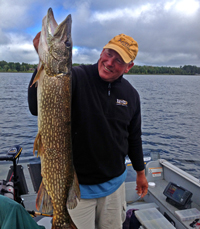 "Travel with almost any group of anglers in Northern Minnesota and you’re bound to hear some pretty dicey comments that reflect poorly on the present state of Northern Pike fishing in the northland.
"Travel with almost any group of anglers in Northern Minnesota and you’re bound to hear some pretty dicey comments that reflect poorly on the present state of Northern Pike fishing in the northland.
All too often, anglers encounter lakes that have enormous populations of stunted Pike where catching a "quality fish" could earn you a lifetime achievement award. Try to swim a lure through these legions of small Pike and it’s easy to see how they would raise the ire of anyone hoping to attract the attention of more worthy combatants.
Snakes, scissors bills, slimes and a host of other even less flattering nicknames get thrown around on nearly every fishing trip.
But in my travels as a full time fishing guide, I have seen strange transformations occur whenever someone catches ..." Read >> The Quest For Quality Pike
Kids Can Posess Their Own Fish Limits In Minnesota
Q) When I'm fishing with kids, can they have their own limit of fish in addition to mine?
A) Nonresidents age 16 and older are required to have an appropriate fishing license while angling. Non residents under age 16 do not need a license if the parent or guardian is licensed. Children of an adult who has a Minnesota Nonresident Family License may possess their own limit of fish.
However, if the adult has only an Individual License or if the parents have a Husband and Wife License, then the child’s fish are included in the adult’s limit. Nonresidents under age 16 may purchase a nonresident youth license and possess their own limit of fish.
Minnesota Residents under age 16 may take fish without a license. The statute does not state explicitly that under age residents my possess their own limit of fish. But the legislators use of the phrase "take fish" implies that the kids are entitled to their own limit.
*See a complete, Printable PDF >> Minnesota Statutes 97A.451 License Requirements and Exemptions Relating To Age